#Mary Baldwin College
Explore tagged Tumblr posts
Text
5 drinks in at the office holiday party talking about pegging with a coworker i've spoken to twice
#i guess they wrote their college thesis on pegging???#also crazy bc they majored in american lit but didnt know who mary oliver or audre lorde were. but did know frank ohara and james baldwin#topics of conversation between queers at the office party
1 note
·
View note
Text
Hey so like many of you, I saw that article about how people are going into college having read no classic books. And believe it or not, I've been pissed about this for years. Like the article revealed, a good chunk of American Schools don't require students to actually read books, rather they just give them an excerpt and tell them how to feel about it. Which is bullshit.
So like. As a positivity post, let's use this time to recommend actually good classic books that you've actually enjoyed reading! I know that Dracula Daily and Epic the Musical have wonderfully tricked y'all into reading Dracula and The Odyssey, and I've seen a resurgence of Picture of Dorian Gray readership out of spite for N-tflix, so let's keep the ball rolling!
My absolute favorite books of all time are The Haunting of Hill House and We Have Always Lived in the Castle by Shirley Jackson. Classic psychological horror books about unhinged women.
I adore The Bad Seed by William March. It's widely considered to be the first "creepy child" book in American literature, so reading it now you're like "wow that's kinda cliche- oh my god this is what started it. This was ground zero."
I remember the feelings of validation I got when people realized Dracula wasn't actually a love story. For further feelings of validation, please read Frankenstein by Mary Shelley and The Strange Case of Dr. Jekyll and Mr. Hyde by Robert Louis Stevenson. There's a lot the more popular adaptations missed out on.
Rebecca by Daphne du Maurier is an absolute gem of a book. It's a slow-build psychological study so it may not be for everyone, but damn do the plot twists hit. It's a really good book to go into blind, but I will say that its handling of abuse victims is actually insanely good for the time period it was written in.
Moving on from horror, you know people who say "I loved this book so much I couldn't put it down"? That was me as a kid reading A Little Princess by Frances Hodgson Burnett. Picked it up while bored at the library and was glued to it until I finished it.
Peter Pan and Wendy by JM Barrie was also a childhood favorite of mine. Next time someone bitches about Woke Casting, tell them that the original 1911 Peter Pan novel had canon nonbinary fairies.
Watership Down by Richard Adams is my sister Cori's favorite book period. If you were a Warrior Cats, Guardians of Ga'Hoole or Wings of Fire kid, you owe a metric fuckton to Watership Down and its "little animals on a big adventure" setup.
A Raisin in the Sun by Lorraine Hansberry was a play and not a book first, but damn if it isn't a good fucking read. It was also named after a Langston Hughes poem, who's also an absolutely incredible author.
Fahrenheit 451 by Ray Bradbury is a book I absolutely adore and will defend until the day I die. It's so friggin good, y'all, I love it more than anything. You like people breaking out of fascist brainwashing? You like reading and value knowledge? You wanna see a guy basically predict the future of television back in 1953? Read Fahrenheit.
Huckleberry Finn by Mark Twain and To Kill a Mockingbird by Harper Lee are considered required reading for a reason: they're both really good books about young white children unlearning the racial biases of their time. Huck Finn specifically has the main character being told that he will go to hell if he frees a slave, and deciding eternal damnation would be worth it.
As a sidenote, another Mark Twain book I was obsessed with as a kid was A Connecticut Yankee in King Arthur's Court. Exactly what it says on the tin, incredibly insane read.
If Beale Street Could Talk by James Baldwin is a heartbreaking but powerful book and a look at the racism of the time while still centering the love the two black protagonists feel for each other. Giovanni's Room by the same author is one that focuses on a MLM man struggling with his sexuality, and it's really important to see from the perspective of a queer man living in the 50s– as well as Baldwin's autobiographical novel, Go Tell it on the Mountain.
Agatha Christie mysteries are all still absolutely iconic, but Murder on the Orient Express is such a good read whether or not you know the end twist.
Maybe-controversial-maybe-not take: Lolita by Vladimir Nabokov is a good book if you have reading comprehension. No, you're not supposed to like the main character. He pretty much spells that out for you at the end ffs.
Animal Farm by George Orwell was another favorite of mine; it was written as an obvious metaphor for the rise of fascism in Russia at the time and boy does it hit even now.
And finally, please read Shakespeare plays. As soon as you get used to their way of talking, they're not as hard to understand as people will lead you to believe. My absolute favorite is Twelfth Night- crossdressing, bisexual love triangles, yellow stockings... it's all a joy.
and those are just the ones i thought of off the top of my head! What're your guys' favorite classic books? Let's make everyone a reading list!
2K notes
·
View notes
Note
any suggestions for queer books for a junior high school library? there's a book order coming up in december and i noticed my school is severely lacking in queer books so i need some ones to request. in particular, we're really lacking in books with transgender and/or bisexual main characters. (also, i'm in the south so books that have been targeted by bans may not be available here)
Absolutely yes. The ban-targeting is definitely a challenge (my Cool for the Summer is actually a great fit for this but may be an issue for that reason), but let’s see what we can do!
For trans main characters I think are a good fit for that age, try Cemetery Boys by Aiden Thomas, Zenobia July by Lisa Bunker, the graphic novel Cheer Up! by Crystal Frasier, Val Wise, and Oscar O. Jupiter, the upcoming graphic novel Girlmode by Magdalene Visaggio and Paulina Ganucheau (upcoming as in 3 weeks from now, so it’ll be out by December), Mask of Shadows by Linsey Miller (genderfluid MC), The Heartbreak Bakery by AR Capetta (agender MC, transmasc LI), The Passing Playbook by Isaac Fitzsimons, Spell Bound by FT Lukens (nonbinary MC), Most Ardently by Gabe Cole Novoa, I Wish You All the Best by Mason Deaver (nonbinary MC), Self Made Boys by Anna-Marie McLemore, and The Borrow a Boyfriend Club by Page Powars. (Those are all YA except Zenobia July, but I felt like that one might work for older tween readers in a way other titles might not, just because the MC’s a hacker, which is cool.)
For bi main characters, some of the above also fit (I Wish You All the Best and The Borrow a Boyfriend Club come to mind immediately), and also try Cool for the Summer, Some Girls Do by Jennifer Dugan, You Should See Me in a Crown by Leah Johnson, Wish You Weren’t Here by Erin Baldwin, Running With Lions by Julian Winters, Leah on the Offbeat by Becky Albertalli (Imogen is newer and great but not sure if college visits are as interesting to junior high students?), Perfect on Paper by Sophie Gonzales, Hani & Ishu’s Guide to Fake Dating by Adiba Jaigirdar, I’ll Be the One by Lyla Lee, The Disasters by MK England, the Emry Merlin series by Robyn Schneider, The Gentleman’s Guide to Vice and Virtue by Mackenzi Lee, and They Both Die at the End by Adam Silvera.
18 notes
·
View notes
Text
au's for eddie i want based on 80s/90s movies i think eddie loves.
sleepless in seattle. After the death of his wife, Sam Baldwin, moves to Seattle with his son, Jonah. When Jonah calls in to a talk-radio program to find a new wife for his father, Sam grudgingly gets on the line to discuss his feelings. Annie Reed, a reporter in Baltimore, hears Sam speak and falls for him, even though she is engaged. Unsure where it will lead, she writes Sam a letter asking him to meet her at the Empire State Building on Valentine's Day. when harry met sally. in 1977, college graduates Harry Burns and Sally Albright share a contentious car ride from Chicago to New York, during which they argue about whether men and women can ever truly be strictly platonic friends. Ten years later, Harry and Sally meet again at a bookstore, and in the company of their respective best friends, Jess and Marie, attempt to stay friends without sex becoming an issue between them. rocky. Rocky Balbo, a small-time boxer from working-class Philadelphia, is arbitrarily chosen to take on the reigning world heavyweight champion, Apollo Creed, when the undefeated fighter's scheduled opponent is injured. While training with feisty former bantamweight contender Mickey Goldmill, Rocky tentatively begins a relationship with Adrian, the wallflower sister of his meat-packer pal Paulie. dirty dancing. Baby is one listless summer away from the Peace Corps. Hoping to enjoy her youth while it lasts, she's disappointed when her summer plans deposit her at a sleepy resort in the Catskills with her parents. Her luck turns around, however, when the resort's dance instructor, Johnny, enlists Baby as his new partner, and the two fall in love. Baby's father forbids her from seeing Johnny, but she's determined to help him perform the last big dance of the summer overboard. Snobbish and wealthy Joanna Stayton is living a life of leisure with her husband, Grant, when she falls off their yacht and suffers amnesia. Grant takes the opportunity to rid himself of the demanding Joanna -- but Dean, a widowed carpenter with four kids who once worked for Joanna, arrives and claims she's his wife. Joanna can't remember her past identity, but has trouble believing that she was ever meant to be a working-class mother of four. breakfast club. Five high school students from different walks of life endure a Saturday detention under a power-hungry principal. The disparate group includes rebel John, princess Claire, outcast Allison, brainy Brian and Andrew, the jock. Each has a chance to tell his or her story, making the others see them a little differently -- and when the day ends, they question whether school will ever be the same - we should make this like. adult version. and being stuck in a work place for some reason. pretty woman. A prostitute and a wealthy businessman fall for one another, forming an unlikely pair; while on a business trip in Los Angeles, Edward, who makes a living buying and breaking up companies, picks up a prostitute, Vivian, on a lark; after Edward hires Vivian to stay with him for the weekend, the two get closer, only to discover there are significant hurdles to overcome as they try to bridge the gap between their very different worlds. the parent trap. In this update of a 1961 film, twins Annie and Hallie are strangers until happenstance unites them. The preteen girls' divorced parents, Nick and Elizabeth are living on opposite sides of the Atlantic, each with one child. After meeting at camp, American Hallie and British-raised Annie engineer an identity swap, giving both the chance to spend time with the parent they've missed. If the scheme works, it might just make the family whole again.
before sunrise. On his way to Vienna, American Jesse, meets Celine , a student returning to Paris. After long conversations forge a surprising connection between them, Jesse convinces Celine to get off the train with him in Vienna. Since his flight to the U.S. departs the next morning and he has no money for lodging, they wander the city together, taking in the experiences of Vienna and each other. As the night progresses, their bond makes separating in the morning a difficult choice.
#WISHLIST.#all this but like......gay ........ can we imagine with me 🧘♀️#i'll add more as i find them
3 notes
·
View notes
Text

Dr. Zelma Watson George (December 8, 1903 – July 3, 1994) was a well-known African American philanthropist who was famous for being an alternate in the UN General Assembly and, as a headliner in Gian-Carlo Menotti’s opera The Medium, the first African American to play a role that was typically played by a white actress.
She enrolled at the University of Chicago and obtained a BA in Sociology. She went on to Northwestern University and studied the pipe organ until she enrolled as a voice student at the American Conservatory of Music.
She received her MA in personnel administration from NYU and her Ph.D. in Sociology. Her doctoral dissertation, A Guide to Negro Music: Towards a Sociology of Negro Music, which cataloged about 12,000 musical compositions written or enthused by African Americans, due to her extraordinary work, allowed her to receive honorary doctorates from Heidelberg College, Baldwin Wallace College, and Cleveland State University.
She was an advisor to President Eisenhower’s Administration. She was involved with various national government committees, which concerned women, youth, and African Americans. She was a part of the Defense Advisory Committee on Women in the Armed Forces. She served on the executive council for the American Society of African Culture. She was a long-time member of the Alpha Kappa Alpha sorority.
President Nixon named her to be a part of the Corporation for Public Broadcasting. She received numerous awards for her accomplishments, including the Dag Hammarskjöld Award, the Dahlberg Peace Award, and the Mary Bethune Gold Medallion. She was inducted into the Ohio Women’s Hall of Fame. #africanhistory365 #africanexcellence #alphakappaalpha
3 notes
·
View notes
Text
482. Seventeen Magazine, March 1996

(see also: 1994, 1995)
Two things that are sightly upsetting: 1. I barely remember looking through this issue when I was 12. 2. I had to pay $30 for this issue off eBay.
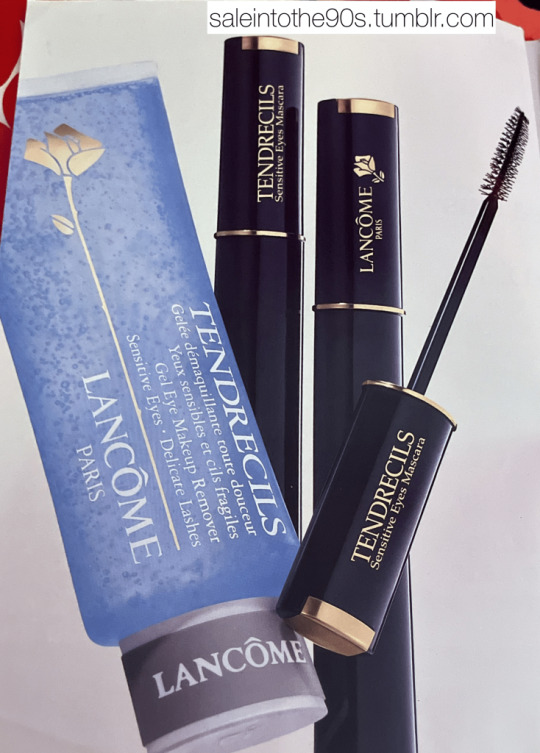
Unfortunately, the Tendrecils line from Lancome is discontinued. Doesn't stop me from misreading it as "tendrils" though.
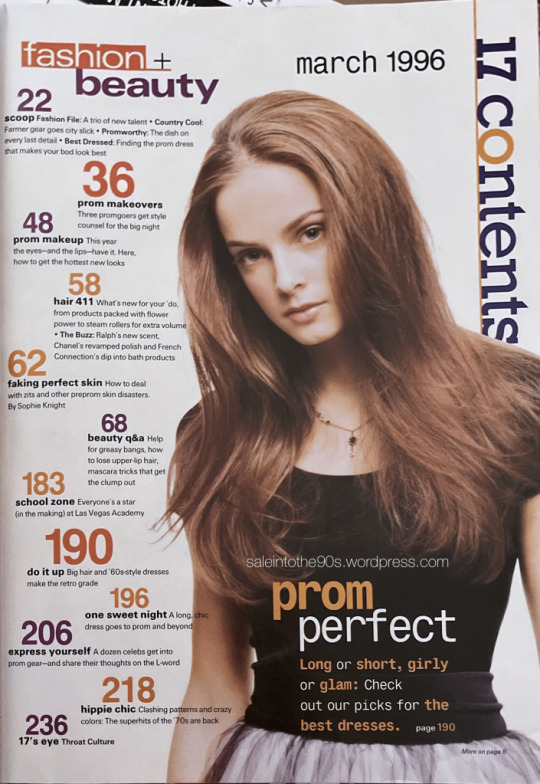
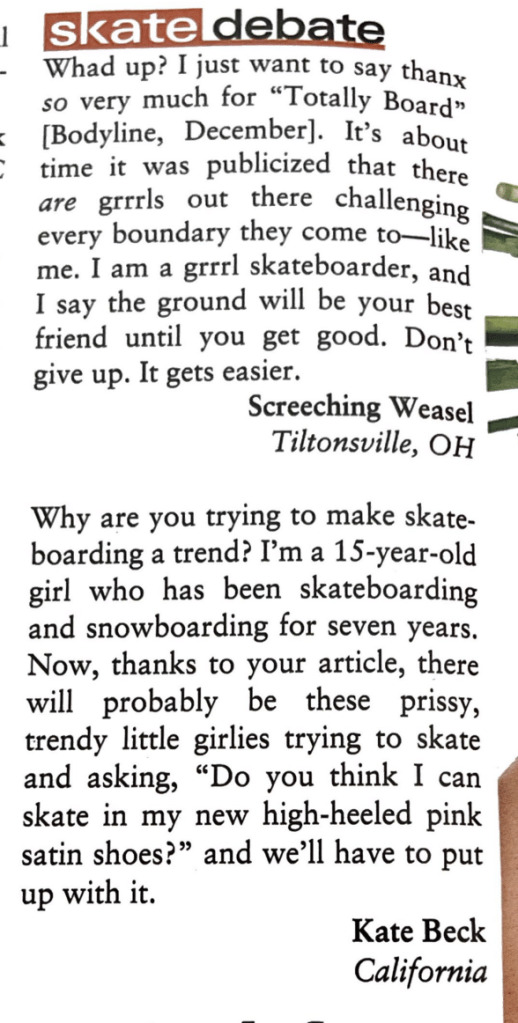
Does Kate know what magazine she's reading. This was Seventeen in 1995/1996, not 'Teen. 'Teen was the girly magazine back then. I don't know about Y/M, never read that one.
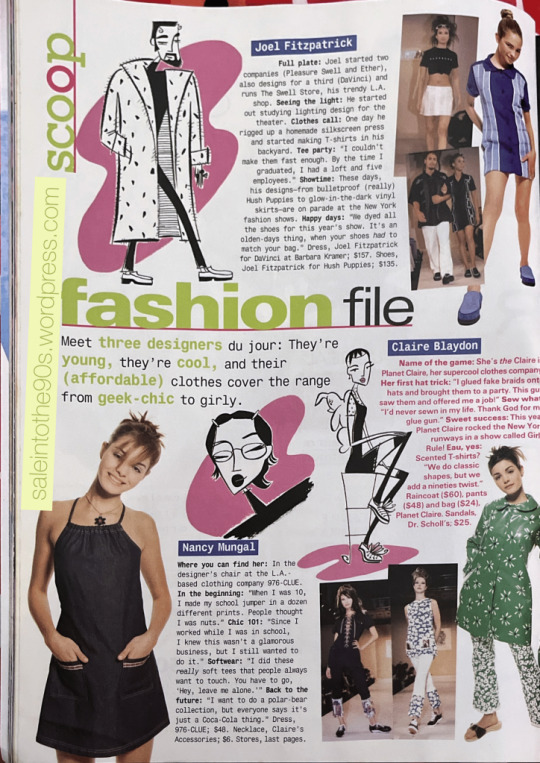
Those Hush Puppies the girl in blue is wearing.
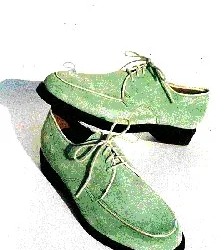
South Coast Today [archive]
A similar green pair with laces seemed to be everywhere in my magazines for a brief time in 1996. I never saw anybody wearing 'em though. Never saw them at Kinney. I don't see 'em on eBay either, Joel sold 6,000 pairs at his store in 1995, wherearethey. 1
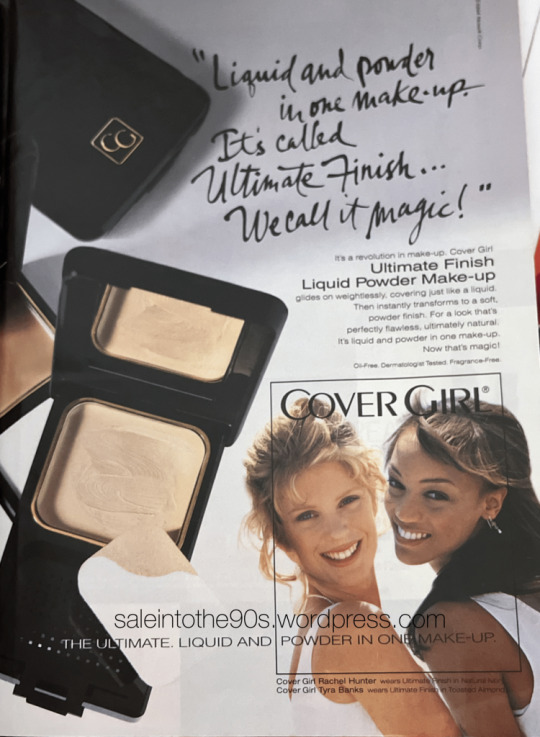
'Y'all know Cover Girl still makes this?!
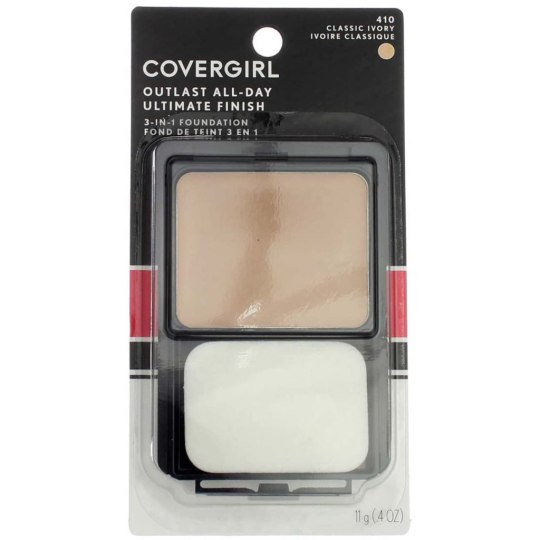

Remember this beautiful "great" packaging Maybelline had. If I had money to throw around to collect old makeup, this would definitely be in the collection.

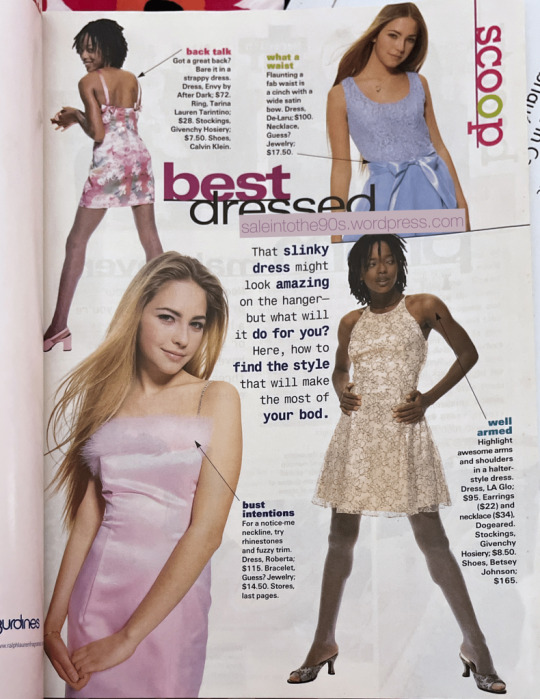
The fuzzy trim dress was a classic prom dress (or, at least the teen magazines made it seem that way) for the mid to late 90s.
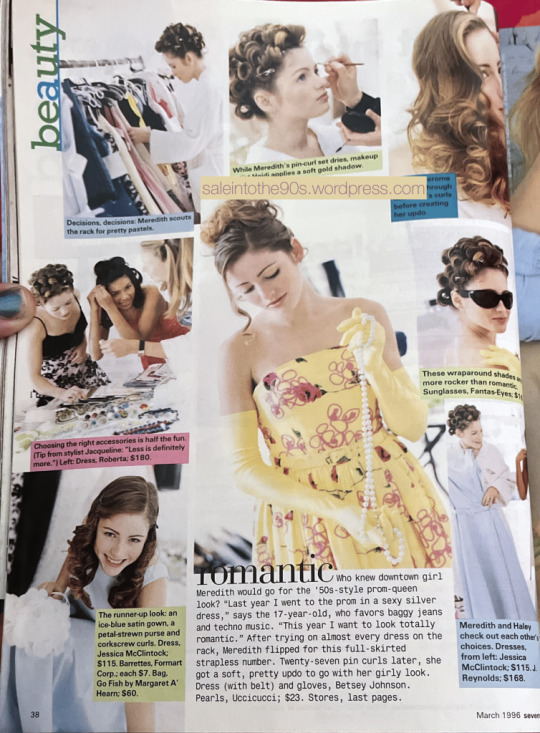

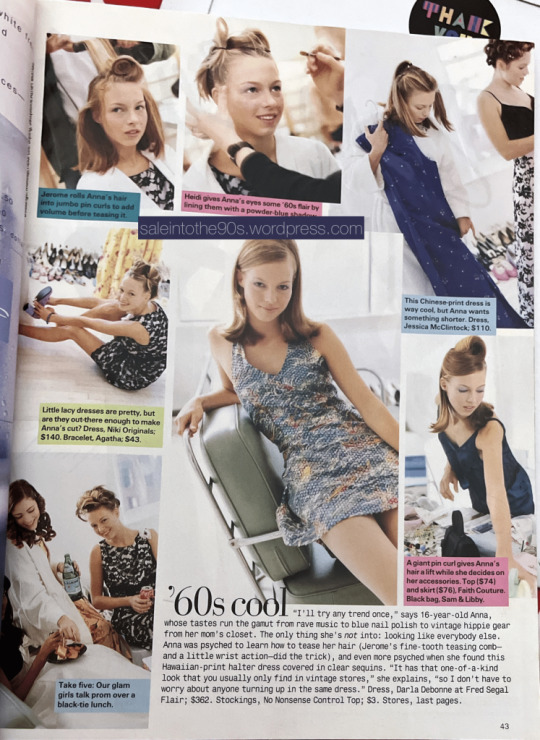
Anna's dress is #1. I love the short sequin Hawaiian print dress. That is 1996.
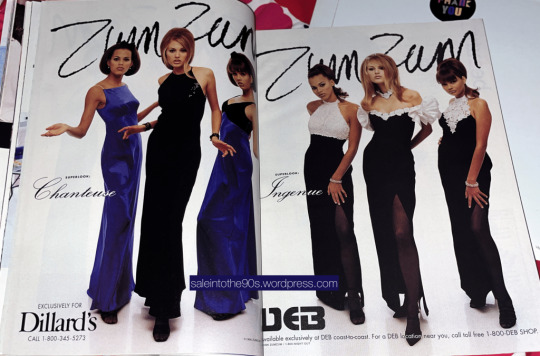
There's those black and white dresses again! The Chanteuse girls will kick all of our butts.
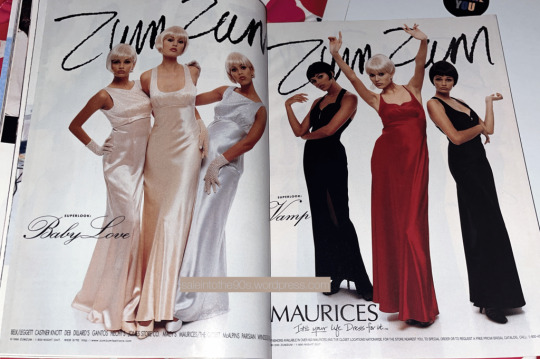
I saw a lot more of these pastel dresses in my 1997 issues, which sadly yes, I'm trying to find on eBay right now. No luck.

If I was allowed to have makeup back then, you better believe I would have worn this look at school the next day.

I honestly had no clue that self tanner was a thing yet, or maybe just a thing that was sold at like, Saks in the glass case.

Slick straight hair. That was the thing. I had hair down to my waist back then so suffice to say I was not sporting this look

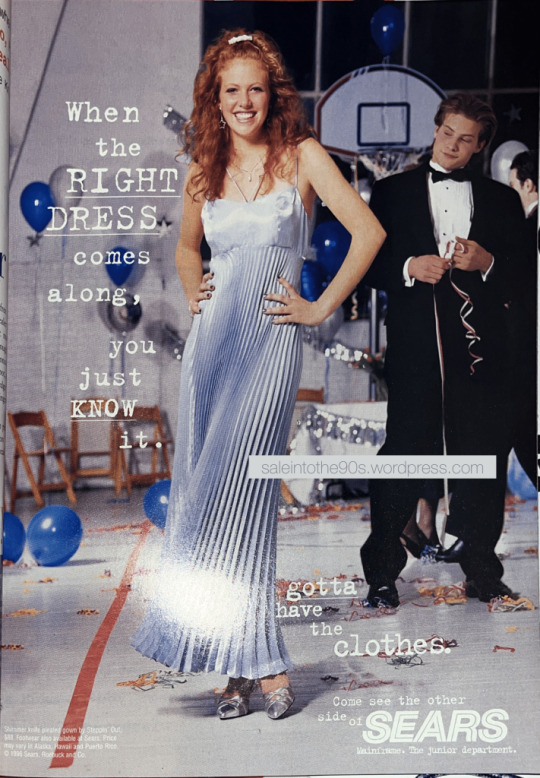

I used to get my Sanrio stuff from the My Doll and Toy Shoppe in downtown Hampton, Virginia. If you said the name of the store quick, it almost sounded like "MIDOL toy shop".
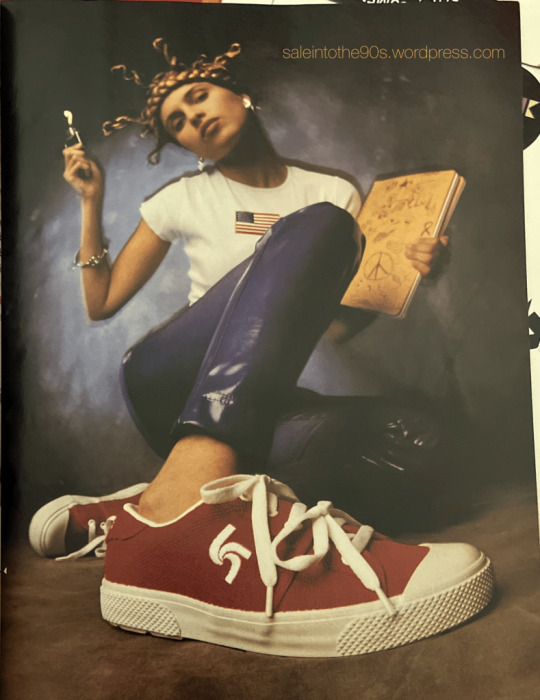
Every time I would see this ad for Kaepa shoes, naive 12 year old me thought "oh my god is that girl going to burn her school down?"
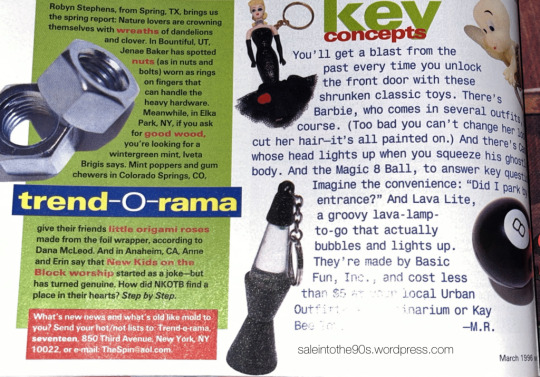
I had that lava lamp keychain and the 8 ball! I used to get them from either Claire's or Spencers. I had a Cracker Jack keychain too around this time that will just randomly show up in my dreams.

Did people really have scanners to scan in their handwriting back then? I imagine they were a small fortune back then. I tried doing some research on this software, but nothing came up.

Mickey was still stuck in 1995.
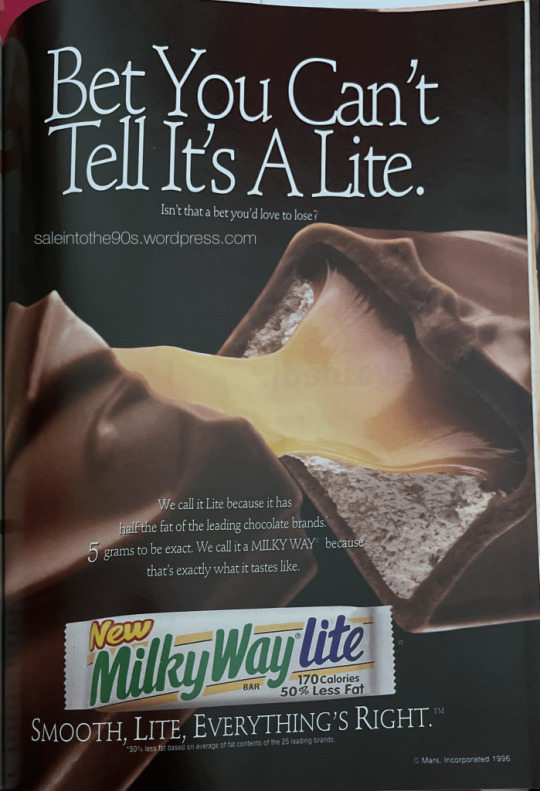
Oh, these were SO GOOD in the waining days of the low fat craze.

I remember when the Backstreet Boys got real big when I was in high school, I thought back to the ad and wondered "wait, haven't they been around for a while?" In 1996, they didn't even have an album in the U.S. yet.
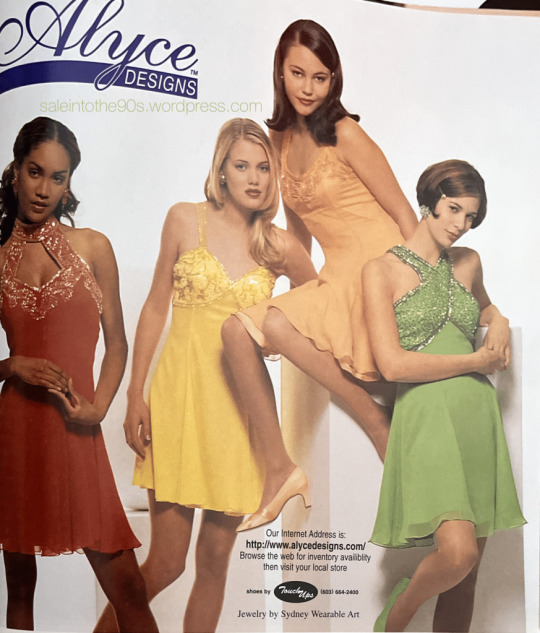
"our internet address is.."
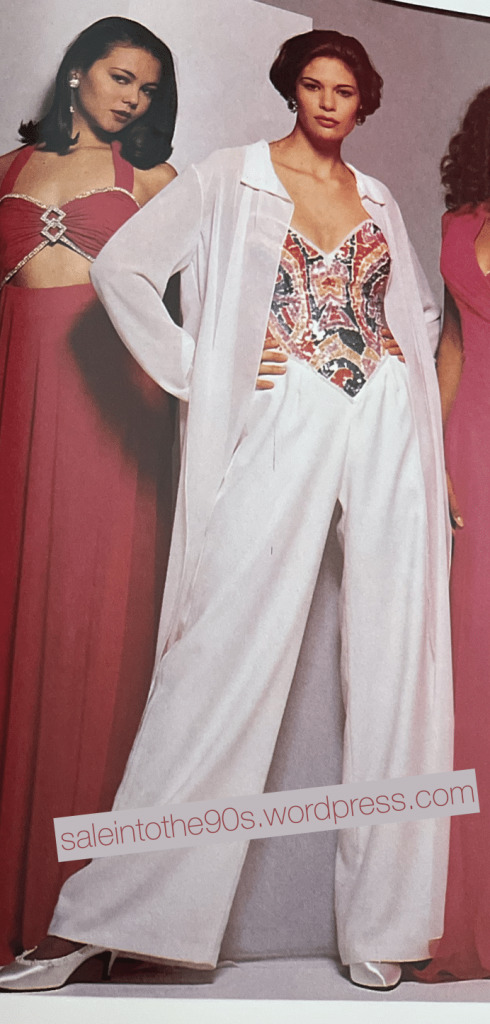
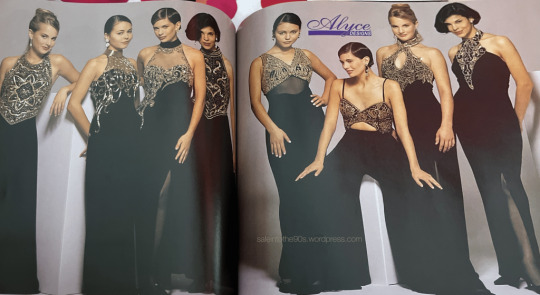
Some of these look more like pageant dresses.

I adore all the short dresses in this issue.
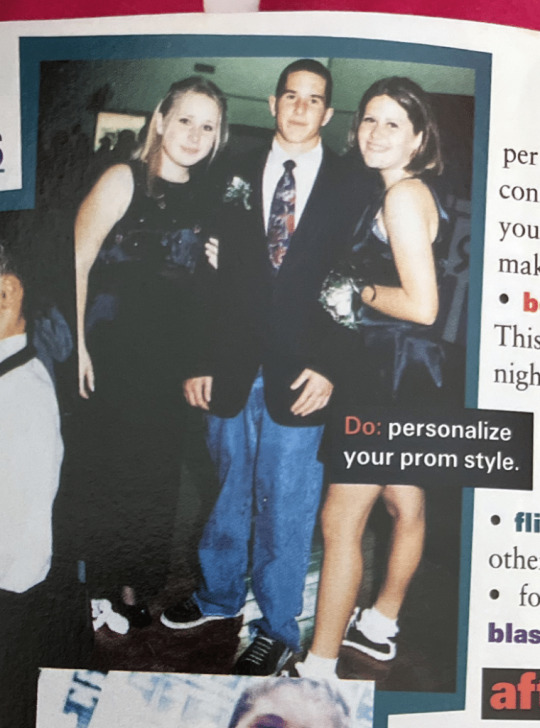
Is this a freshman dance? They look like freshmen.
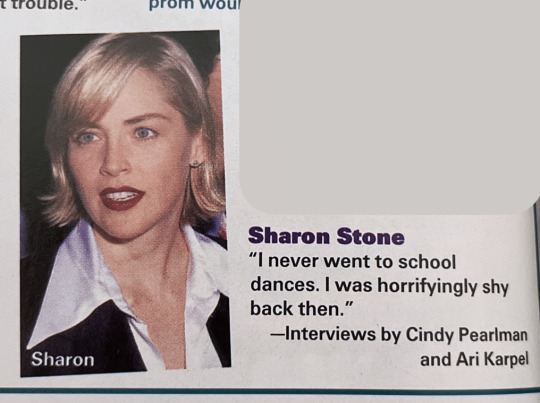
Sharon Stone is a not-g0ing-to-prom icon.
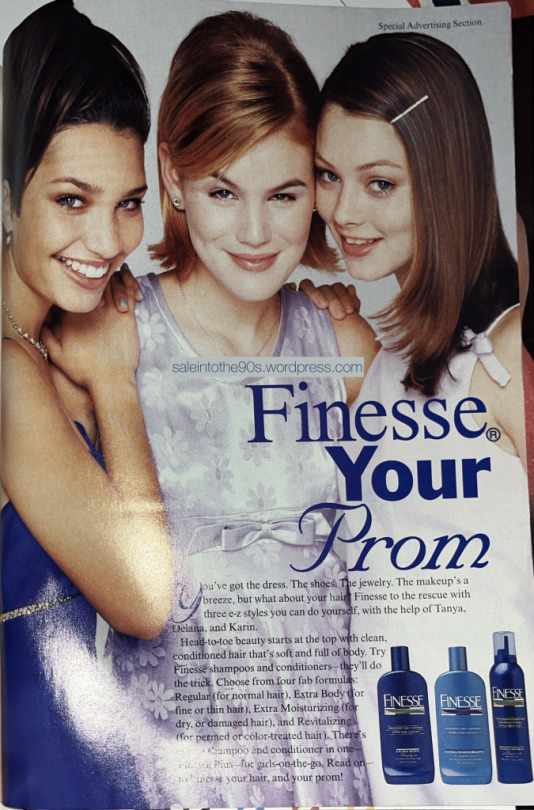
Man, what happened to Finesse? It's like once 2000 hit, it became bottom shelf stuff.
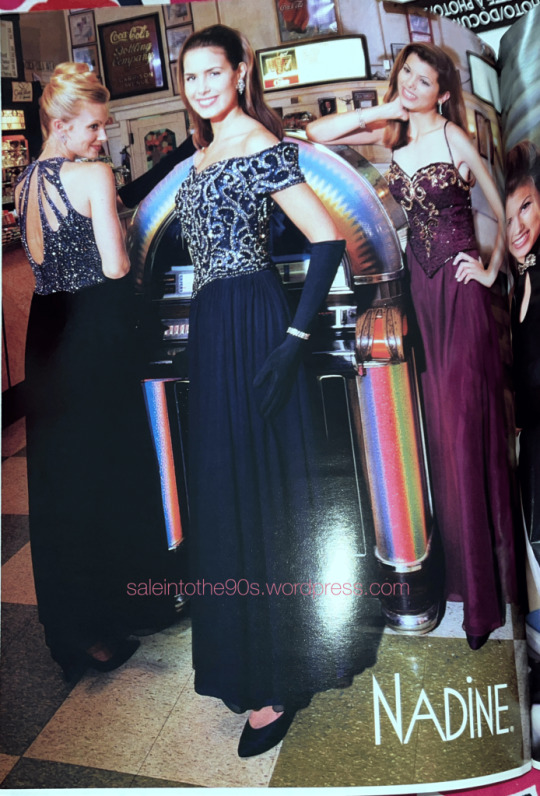
There's always one dress that makes me sad in the prom issues, and I think it's this one. It looks so ... mature.
School Zone time, real pics of real kids from a school in Las Vegas:
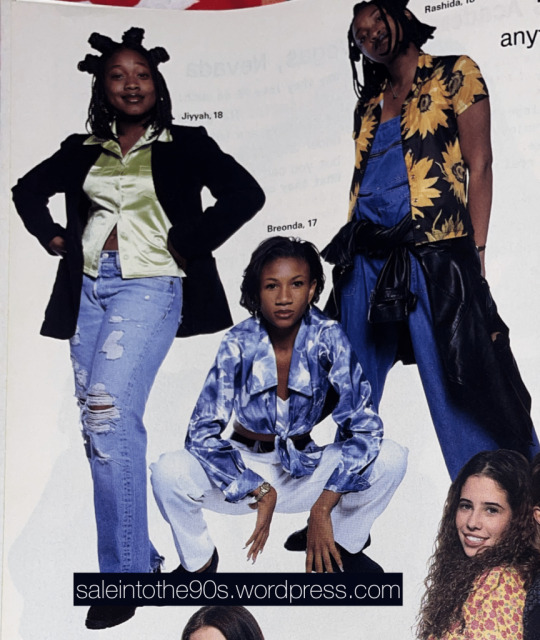
The shiny, silky shirts!

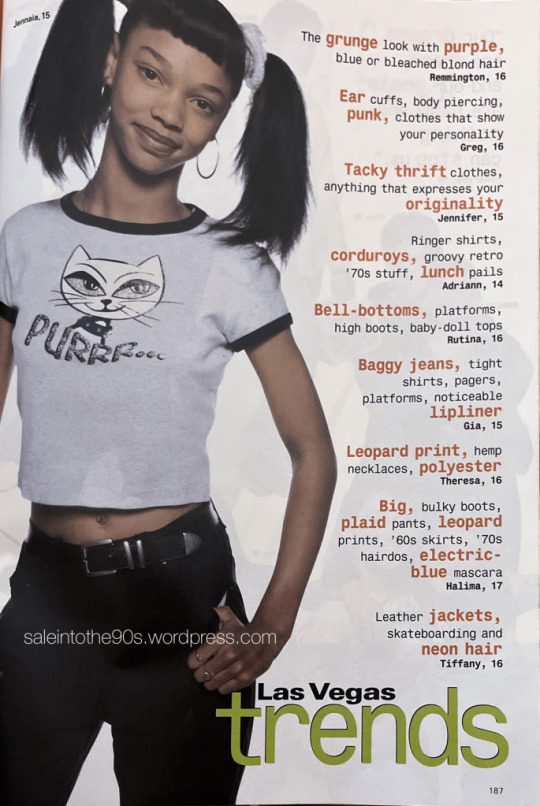
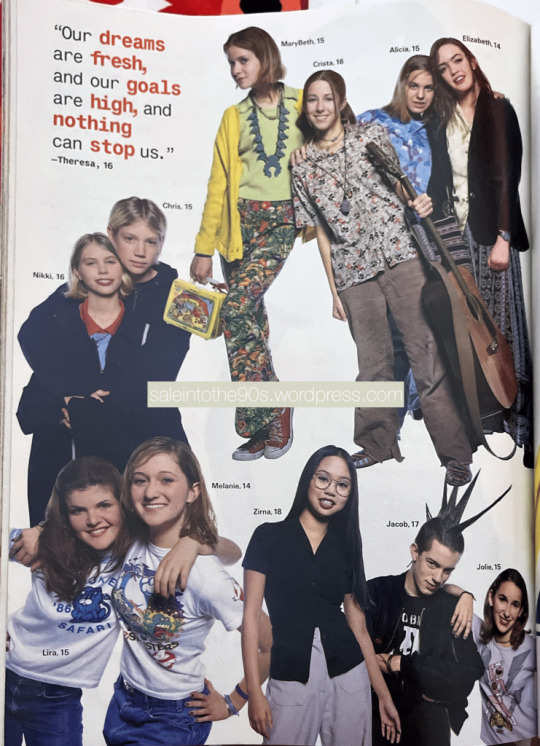
These are the only two things I remember from this issue when I was 12: MaryBeth's amazing outfit--I wanted it so bad--and Jennaia's cat shirt.
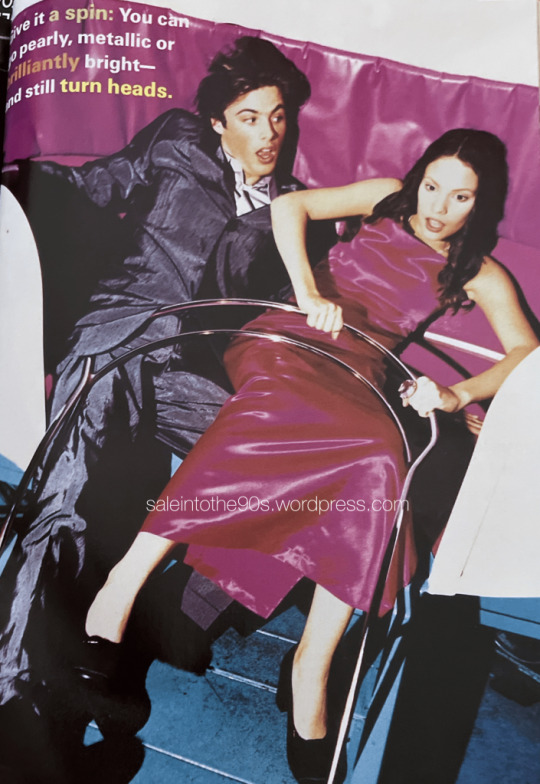
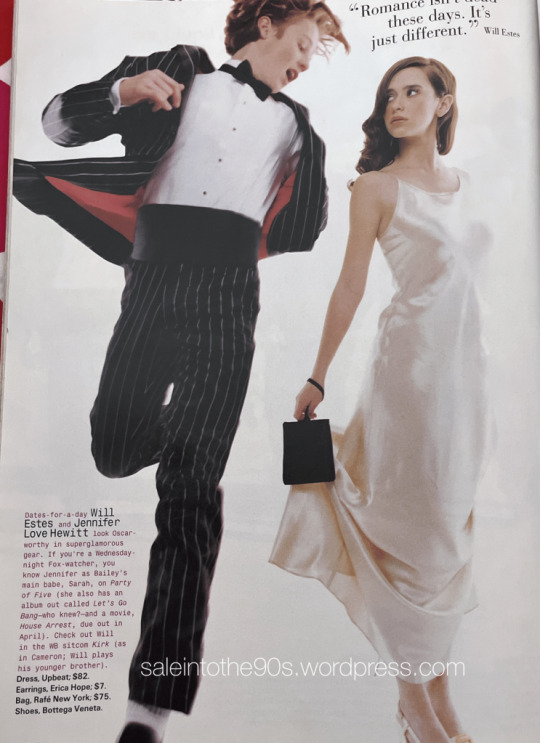
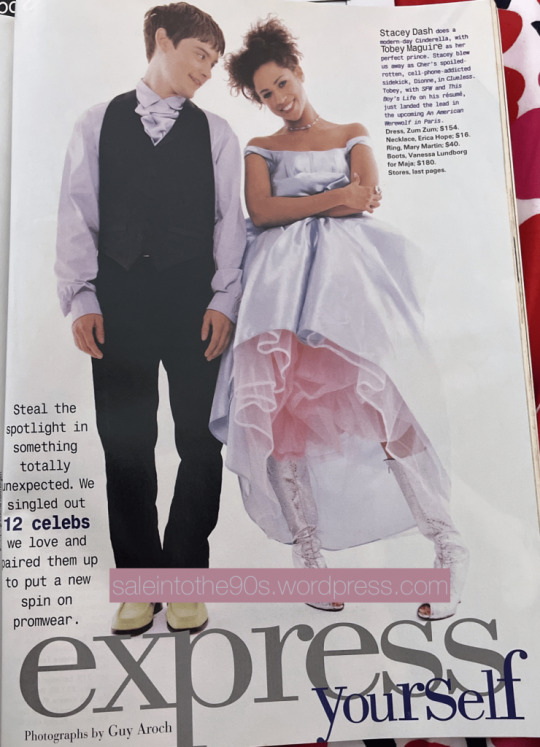
A baby Tobey Maguire.
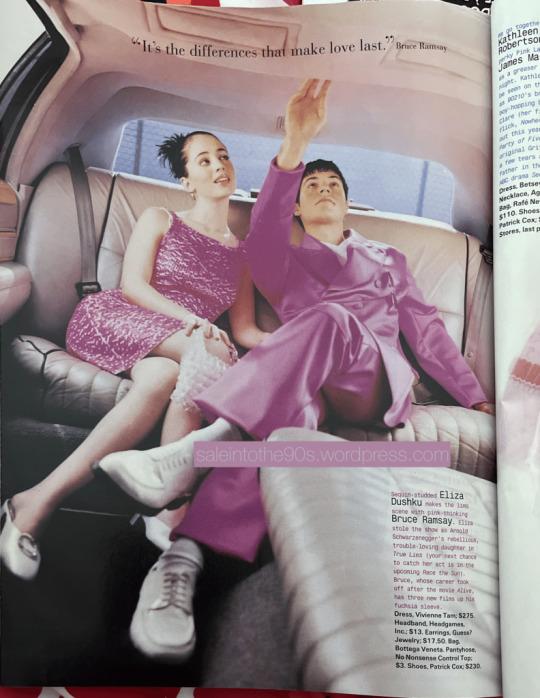
Baby Eliza Dushku. Did anybody else other than me think it was totally the norm for a guy to want to wear a bright tuxedo like this to prom?
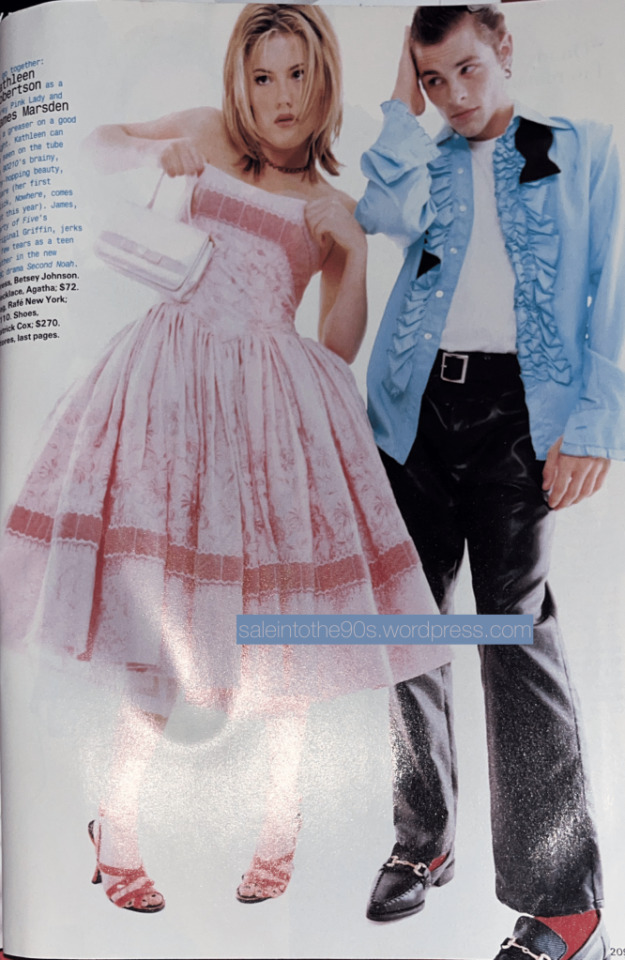
I wish my scanner app on my phone got a better picture of this amazing Betsey Johnson dress Kathleen Robertson is wearing.
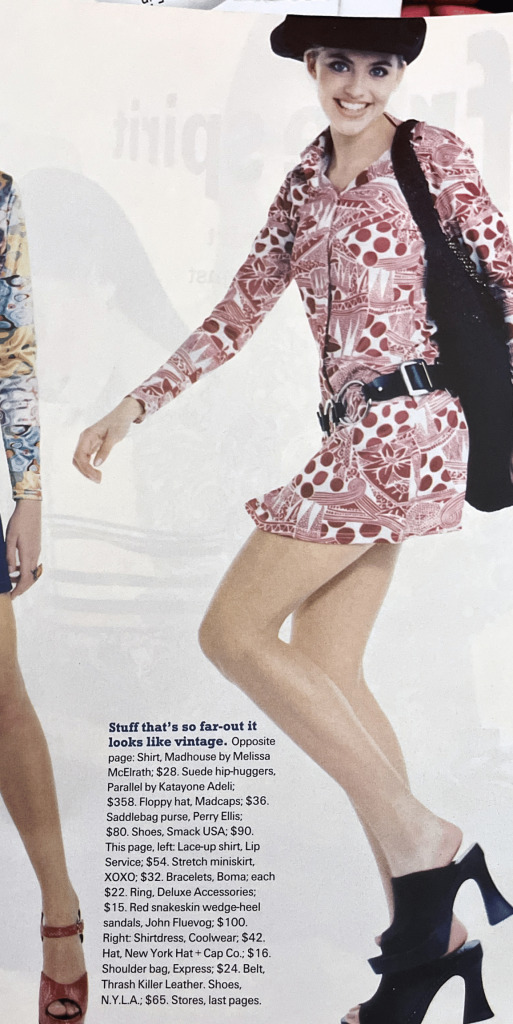

ok, a lot going on here on page 230.
-When I was attending Mary Baldwin College, there was this really cheezy store downtown that sold mostly cutesy poo gag gifts. Very cringe store. I'm sure if that store existed in 1996, they would have sold PMS Crunch.
-We're still in the waining days of the low fat craze here, so here are some "healthy" chips. Garden of Eatin' is still around! I think Guiltless Gourmet went out of business?
-I want to see photos and or footage of the Creamette Pasta Party at Tavern on the Green. All I I found was a blip on the New York Times:
On Saturday, about 17,000 carbo-loaders at the annual pre-marathon pasta party at Tavern on the Green will dig into five dishes created by New Yorkers, one from each borough. The dishes were the winners in a contest sponsored by Creamette pasta. The judges included as many weathermen (Storm Field and Mr. G) and sportswriters (David Kaplan of The Daily News) as food experts (Patrick Clark, Bob Lape and Robin Leach).
The meals, which will be served from 4:30 to 8:30 P.M., are free to runners in the New York City Marathon, which will be held on Sunday. The dishes are: baked ziti and vegetables by Martha Katzeff of the Bronx, rigatoni with beef and cheese by Mike Boyd of Brooklyn, spinach-rotini toss by Barbara Shields of Staten Island, creamy macaroni and basil salad by Karin Mackin of Queens and sweet nutmeg kugel by Diane Girer of Manhattan. All the recipes are by runners. 2
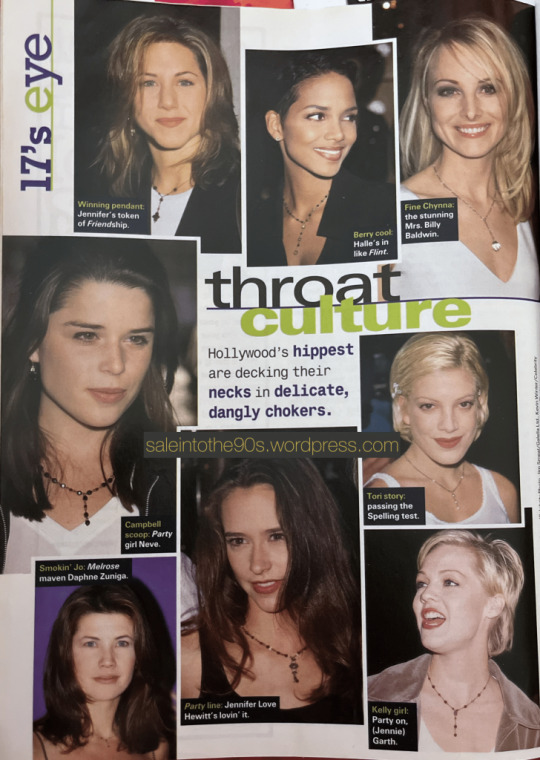
Remember when these Y-Necklaces were popular for about a minute?
1.Parnes, Francine . “Old Dog Trots Out in Trendy Places.” New Bedford Standard-Times, December 25, 1995. https://www.southcoasttoday.com/story/news/1995/12/26/old-dog-trots-out-in/50652285007/. 2.Fabricant, Florence. “Food Notes.” The New York Times, November 8, 1995, sec. Home & Garden. https://www.nytimes.com/1995/11/08/garden/food-notes-021709.html.
38 notes
·
View notes
Text
Do you know Yates County?: Yates County Oddity No. 1 through No. 26
By Jonathan Monfiletto
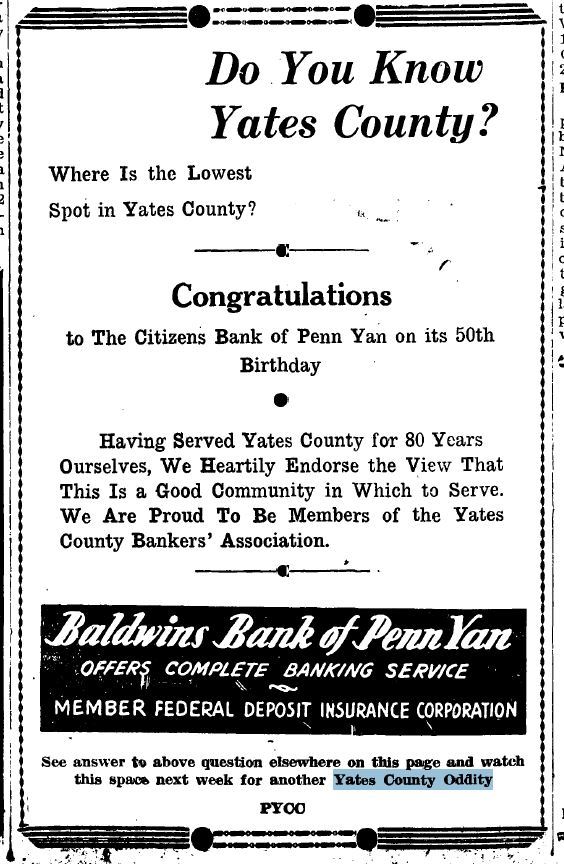
Anyone who has conducted research either through Yates County’s digitized newspapers or the Yates County History Center’s subject files has likely come across items titled either “Penn Yan Oddity” or “Yates County Oddity.” These items – snippets might be a good word – provide information about various aspects of local history, seeming to answer some sort of question or mystery.
Seeing so many of these snippets – and finding the answers but seeming not to find the question – I decided to scour our digitized newspaper database to see if I could find all of them, the questions with the answers. It turns out the oddities – 90 Penn Yan Oddity items, 52 Yates County Oddity items – were part of an advertising campaign in the 1940s for Baldwin’s Bank, then located at 127 Main St. in Penn Yan, the present-day home of the Arts Center of Yates The Penn Yan Oddities ran in The Chronicle-Express in consecutive weeks from February 20, 1947 to November 11, 1948, and then the Yates County Oddities picked up right away in the newspaper from November 18, 1948 to November 24, 1949. So, for more than 2 and a half years, readers of The Chronicle-Express learned something about local history each week in the newspaper.
Each item started out as an advertisement for Baldwin’s Bank with the phrase “Do You Know Yates County?” at the top of the graphic followed by the question for the week. In the middle, the bulk of the ad, would appear information about the bank’s various services and offerings. The bottom would direct the reader to look for the answer elsewhere on the same page and then look for another Oddity the following week.
In this article, I present Yates County Oddity No. 1 through No. 26. Each question and answer has been transcribed exactly as it appeared in the newspaper, which changes made only for typographical errors and not for grammatical errors. The only time words have been removed from the items is in the case of references to photographs that appeared in the newspaper.
1) Where are there 10 different classifications of soil within ½ mile?
A Yates County soil analysis made in 1916 shows that at Fiveville, a little south of Italy Hill, there are 10 classifications of soil within a half-mile radius: Wooster, gravelly silt loam and stoney silt loam, Volusia flat phase silt loam and silt loam, muck, Holly silt loam, Papakating silt clay loam, Chenango gravelly silt loam, Lordstown stoney silt loam, and Genesee silt loam.
2) What farm still uses an “old oaken bucket?”
There is an “Old Oaken Bucket” well still in use on the old McFarren farm, Penn Yan, RD 4, now owned by H.M. Fulkrod. The bucket is lowered by a rope and there is a wood hand brake to slow the speed as it descends the well. When filled, the bucket is drawn up by turning the crank attached to the wooden spool.
3) Who was the first white child born here?
The great grandfather of Charles Beaumont, Penn Yan insurance agent and real estate brother, is said to be the first white child born in what is now Yates county. Joseph Hopeton Beautmont was born Sept. 26, 1798, to James Beaumont, native of England, and Mary Malin Beaumont, flollowers of Jemima Wilkinson. Their child was the first born in the New Jerusalem settlement. J.H. Beaumont died June 27, 1893, in the residence at 109 East Main street, now owned and occupied by Herbert Thayer. The old “Beaumont” horseblock may still be seen in front of the residence.
4) Bricks for what building were made of clay dug from the building’s cellar?
Sixty years ago this summer clay was removed when the basement for Ball hall of Keuka institute and college was being excavated. The same clay went chiefly into the making of the interior bricks from which the present structure was built.
5) What township was called Vernon?
From Jerusalem township of Ontario county in 1803 a new township, including what is now Milo and Torrey, was created and named Vernon. But Oneida county had created a Vernon township a year earlier, so confusion resulted. As a result on April 6, 1809 the state legislature changed the name of Vernon township, Ontario county, to Snell, honoring the state senator, Jacob Snell from Montgomery county.
Residents of this area apparently saw no reason for honoring a senator from another county, so assembled in a protest meeting at the inn of Luman Phelps, located at the corner of Main and Head streets in the young village of Penn Yan. The group petitioned the legislature to change the name to Benton township, honoring Levi Benton, the first settler in the region. On April 2, 1810, Albany nodded consent.
Milo township was set up and apart from Benton township in 1818 and Torrey township was separated from Benton in 1851.
6) What traditional birthplace of a people is in Yates?
Bare Hill in the western section of Yates county on the east side of Canandaigua lake is famous in legends of the early inhabitants of Yates county as the supernatural birthplace of the Seneca Indians.
7) What was the first name of Starkey town?
Both Starkey and Barrington townships were originally, along with Tyrone, Wayne, and Reading townships, now of Steuben and Schuyler counties, a part of Frederickton in Steuben county. Afterwards Reading was cut off and the Town of Wayne, including what is now Barrington, was organized. In 1822 Barrington was organized with the boundaries that define it today and in 1826, along with Starkey, it was annexed to Yates county.
8) Where was the nearest toll gate to Penn Yan?
A toll gate on the Penn Yan Branchport plank roead was near the site of the Allison and Daniels office – the old Hanford farm. The toll gate at the other end of the road was near Esperanza at the foot of the old road that ascends the hill west of the spacious mansion. Many older residents can remember the ruins of this toll gate house.
9) What surveyor was first settler of a town?
John Mower, 18, carried the chain, served as cook and was in charge of the pack horses for the crew which surveyed the new pre-emption line from Pennsylvania’s north border to Lake Ontario. In 1790 he settled in West River hollow, Italy township. Italy was originally part of Middletown township, organized in 1789, but changed to Naples township in 1808. Seven years later Italy township was set off. John Mower is quoted in history as saying that one spring he killed 314 rattlesnakes on the west side of the stream not far from the rocky ledges where they hibernated. The township was then rich in a dense forest of noble trees.
10) What rural cemeteries were once next to churches?
The cemetery near Swing’s or Ovenshire’s corners on the Penn Yan-Dundee road in Barrington and the Nettle Valley cemetery on the Penn Yan-Potter road, road were once adjoining churches. The church buildings have long since been removed and their location obliterated.
Do you know of any others in Yates county?
11) What was the first barn west of Seneca Lake?
In 1791, according to tradition, Caleb Benton built a barn 30 by 40 feet, starting on Monday morning with trees standing in the woods. These, it is said, were felled, hewed, and framed and the barn enclosed so that wheat was drawn into it by Saturday.
This was reported to be the first barn built west of Seneca lake.
12) Is there a battle ground sites in Yates?
The nearest any part of the present area of Yates county came to becoming a battleground was Sept. 9, 1779, when 400 of General Sullivan’s riflemen were sent along the west side of Seneca lake from the site of Geneva to what is now Kashong point and there wrecked the Indian settlement. Resistance of the [Native Americans] was insignificant if not entirely lacking.
The power of Indians had been broken in the battle of Newtown, east of Elmira.
13) What is Lake Keuka unlike other lakes?
Lake Keuka is unique, but not because it is shaped like the letter Y.
Geologists say that it is perhaps the only body of Y-shaped water with one of the upper branches an inlet and the other an outlet. Elsewhere nature has made the two top branches inlets and the base branch an outlet. Early glacial action, say geologists, created this freak. Water flows in at Hammondsport, the south end, also at Branchport, one of the north ends, and flows out through the other north end by way of the East or Penn Yan branch.
14) How old is the Friend house?
While commonly referred to as 150 years, the actual age of the Jemima Wilkinson house in Jerusalem is a matter of dispute. Arnold Potter, descendant of the early Friend settlers, believes the dwelling was some five years in the building and was completed in 1815. Her death occurred four years later. The Friend joined her followers near City Hill, Torrey township, in 1790 and there built the first frame dwelling in western New York. This would have been 25 years before completion of the Jerusalem home which still stands.
15) Where is there a Kentucky coffee tree?
On the east side of Route 14, the Dresden-Geneva state road, just before crossing the bridge over Kashong creek as one drives north out of Yates into Ontario county is a Kentucky Coffee tree – a rare sight in this vicinity. The tree is conspicuous because of its large leaf and uniquely shaped seed pod.
Does anyone know of any others in Yates county?
16) Through what bay does Yates rainfall reach ocean?
Practically all the area of Yates county drains into Canandaigua, Keuka, or Seneca lakes or into Potter swamp and runs eventually through the St. Lawrence river and bay into the Atlantic ocean. But a very limited section of South Italy and Jerusalem townships drain into the Cohocton and a bit of southern Barrington into Waneta and Lamoka lakes from when the water may flow through the Susquehanna system into the Atlantic by way of the Chesapeake bay, some 1,000 miles south of the St. Lawrence.
17) How many Yates places use Old World names?
At least four Yates county townships – Italy, Jerusalem, Milo, and Middlesex – have names which were long famous in England or on the continent of Europe. Also two villages – Dundee and Dresden.
Do you know of any other Yates community names borrowed from other countries?
18) What famous orator was born in this county?
Some of the addresses of Red Jacket, famed Indian orator, have been included in printed collections of the famous speeches of the years. But Red Jacket may or may not have been born in Yates county. Historians disagree upon the place of his birth. It may have been near Branchport or at Canoga, in Seneca county.
Robert G. Ingersoll, agnostic and brilliant orator, was born in Dresden Aug. 11, 1833. His birthplace is being preserved in his memory.
19) Where is the highest spot in Yates County?
The highest spot in Yates county is 2,130 feet above sea level and includes a few acres on the high plateau just west of the Jerusalem township line in Italy, about six miles west and a bit north of Branchport. It was in this area that a bomber crashed during World War II, killing all occupants.
20) Where is the lowest spot in Yates County?
The lowest spot in Yates county is above sea level – and is located somewhere in the bottom of Seneca lake this side of the Seneca county line which is in the middle of the lake.
Within the last few years Yates county has “settled” a great deal – some 400 feet roughly. Up to that time the eastern boundary of the county was highwater mark on the west shore of Seneca lake, which is listed as about 444 feet above sea level. This boundary caused much confusion. Game Protector Clay White, for example, apprehending a duck hunter or fisherman off the Yates county shore for some violation, had to take his man all the way around the end of Seneca lake, possibly 40 miles, to bring him before a Seneca county official. Assemblyman Vernon Blodgett introduced a bill a few years ago placing the county boundary in the middle of the lake.
In spots Seneca lake bottom is said to be even a bit below sea level.
21) How may lakes are there in the county?
There are no lakes in Yates county – entirely within the county, that is.
More than half of the Lake Keuka shoreline is within Yates, about seven miles of the Canandaigua shore line and over 20 miles of Seneca lake’s west shore. Lakes Waneta and Lamoka are just beyond the county boundaries.
22) How many railroads are there in the county?
Three different railroad companies operate lines in Yates county: the Pennsylvania, the New York Central, and the Lehigh Valley, the latter running diesel motors over the Middlesex Valley line between Geneva and Naples. These are the first diesels to be used in regular service in the county.
23) How many schools are there in the county?
While there are 50 rural school districts in Yates county, according to Superintendent Stephen Underwood of Branchport, but 26 of them maintain a school. Of the remaining 24 districts, 8 have sold their buildings; the others being idle, actually there are 32 schools in Yates county, if you add to the above 26 rural schools, the Middlesex Valley and Dundee central schools, St. Michael’s Parochial school in Penn Yan, the Penn Yan Union school (which has five buildings), Lakemont academy, and Keuka college with its several buildings.
24) How many miles of state road are there?
According to George Havens, county superintendent of highways, the total public highway mileage in Yates county is 1,813.44. Of this total 149.18 miles are in county highways, 109.16 state roads, and only 55.10 of town roads.
25) How many post offices are there in Yates?
Two of the Yates county townships, Italy and Barrington, have no post offices. Three townships have one post office each: Rushville in Potter, Dresden in Torrey, and Middlesex in Middlesex township. Milo and Benton have two post offices each: Penn Yan and Himrod in the former, Bellona and Gage in the latter. Jerusalem township with three offices, at Branchport, Bluff Point, and Keuka Park, and Starkey with four, at Dundee, Rock Stream, Starkey, and Lakemont, bring the total number of post offices now operating in this county to 14. Years ago there were many more.
26) How many public libraries in Yates County?
Branchport, Keuka Park, Dundee, and Penn Yan now have the only libraries which are open to the public.
All of these are included as participants in the Yates County Community chest.
#historyblog#history#museum#archives#american history#us history#local history#newyork#yatescounty#newspaper#chronicleexpress#yatescountyoddity
2 notes
·
View notes
Text
I've said it before and I will say it again, the Blackfriars' Playhouse in Staunton, VA is a gem. I went to Mary Baldwin for college and spent my free time volunteering as an usher at the theater. In doing so, not only did I get to see the shows I ushered for, but I received a comp ticket for each one I ushered. I saw so. much. Shakespeare. And every show was phenomenal. Greg Phelps as Bottom in Midsummer? Hilarious. Patrick Earl as Hamlet? Amazing (side note, I nearly literally ran into him will out on a run in the countryside). The time they had Alison play Scrooge during Christmas time? So damn good. One of my favorite shows I saw them do was Love's Labour's Lost. During the part where the Prince and Co are dressed as Russians to sneak in to see the ladies (because that's what you do when your Prince is a fool and swears off women right before the Princess and her friends come to visit), they sing a cover of "What Makes You Beautiful" (as one does) and got right up with the audience (both on stage and off). What makes it great was that Patrick Midgely, bless his heart, can't really sing. So instead of singing his verse, he kind of just spoke? it. It sent me and my roommate into tears every time we remembered it.
love shakespeare. did a hamlet run tonight, looked someone dead in the eye to say “am i a coward?” during a speech and the fucker shrugged and nodded
123K notes
·
View notes
Text
Commons Vote
On: Children's Wellbeing and Schools Bill Report Stage: Amendment 210
Ayes: 167 (57.8% Con, 36.1% LD, 2.4% DUP, 1.8% RUK, 0.6% Ind, 0.6% UUP, 0.6% TUV) Noes: 324 (97.2% Lab, 1.9% Ind, 0.9% Green) Absent: ~158
Day's business papers: 2025-03-18
Likely Referenced Bill: Children’s Wellbeing and Schools Bill
Description: A Bill to make provision about the safeguarding and welfare of children; about support for children in care or leaving care; about regulation of care workers; about regulation of establishments and agencies under Part 2 of the Care Standards Act 2000; about employment of children; about breakfast club provision and school uniform; about attendance of children at school; about regulation of independent educational institutions; about inspections of schools and colleges; about teacher misconduct; about Academies and teachers at Academies; repealing section 128 of the Education Act 2002; about school places and admissions; about establishing new schools; and for connected purposes.
Originating house: Commons Current house: Commons Bill Stage: Report stage
Individual Votes:
Ayes
Conservative (96 votes)
Alberto Costa Alex Burghart Alicia Kearns Alison Griffiths Andrew Bowie Andrew Murrison Andrew Rosindell Aphra Brandreth Ben Obese-Jecty Ben Spencer Bernard Jenkin Bob Blackman Bradley Thomas Caroline Dinenage Caroline Johnson Charlie Dewhirst Chris Philp Claire Coutinho Damian Hinds Danny Kruger David Davis David Reed David Simmonds Desmond Swayne Edward Argar Gagan Mohindra Gareth Bacon Gareth Davies Geoffrey Clifton-Brown Geoffrey Cox George Freeman Graham Stuart Greg Smith Gregory Stafford Harriet Cross Harriett Baldwin Helen Grant Helen Whately James Cleverly James Wild Jeremy Hunt Jeremy Wright Jerome Mayhew Jesse Norman Joe Robertson John Cooper John Glen John Hayes John Lamont John Whittingdale Joy Morrissey Julia Lopez Julian Lewis Julian Smith Karen Bradley Katie Lam Kemi Badenoch Kevin Hollinrake Kieran Mullan Kit Malthouse Laura Trott Lewis Cocking Lincoln Jopp Louie French Luke Evans Mark Francois Mark Garnier Mark Pritchard Martin Vickers Matt Vickers Mike Wood Mims Davies Neil Hudson Neil O'Brien Neil Shastri-Hurst Nigel Huddleston Oliver Dowden Paul Holmes Peter Bedford Peter Fortune Priti Patel Rebecca Harris Rebecca Paul Rebecca Smith Richard Fuller Robbie Moore Robert Jenrick Roger Gale Saqib Bhatti Shivani Raja Steve Barclay Stuart Anderson Stuart Andrew Tom Tugendhat Victoria Atkins Wendy Morton
Liberal Democrat (60 votes)
Adam Dance Al Pinkerton Alex Brewer Alison Bennett Alistair Carmichael Andrew George Angus MacDonald Anna Sabine Bobby Dean Calum Miller Caroline Voaden Charlie Maynard Charlotte Cane Chris Coghlan Christine Jardine Claire Young Daisy Cooper Danny Chambers David Chadwick Ed Davey Edward Morello Gideon Amos Helen Maguire Helen Morgan Ian Roome Ian Sollom Jamie Stone John Milne Josh Babarinde Layla Moran Lee Dillon Lisa Smart Liz Jarvis Luke Taylor Manuela Perteghella Marie Goldman Martin Wrigley Max Wilkinson Mike Martin Munira Wilson Olly Glover Paul Kohler Rachel Gilmour Richard Foord Roz Savage Sarah Dyke Sarah Gibson Sarah Green Sarah Olney Steff Aquarone Steve Darling Susan Murray Tessa Munt Tim Farron Tom Gordon Tom Morrison Victoria Collins Vikki Slade Wendy Chamberlain Will Forster
Democratic Unionist Party (4 votes)
Carla Lockhart Gavin Robinson Gregory Campbell Jim Shannon
Reform UK (3 votes)
James McMurdock Lee Anderson Richard Tice
Independent (1 vote)
Alex Easton
Ulster Unionist Party (1 vote)
Robin Swann
Traditional Unionist Voice (1 vote)
Jim Allister
Noes
Labour (312 votes)
Abena Oppong-Asare Abtisam Mohamed Adam Jogee Adam Thompson Alan Campbell Alan Gemmell Alan Strickland Alex Baker Alex Ballinger Alex Barros-Curtis Alex Mayer Alex McIntyre Alex Norris Alison Hume Alison McGovern Alison Taylor Alistair Strathern Amanda Hack Amanda Martin Andrew Cooper Andrew Lewin Andrew Pakes Andrew Ranger Andy MacNae Andy McDonald Andy Slaughter Angela Eagle Anna Dixon Anneliese Dodds Anneliese Midgley Antonia Bance Baggy Shanker Bambos Charalambous Bayo Alaba Beccy Cooper Bell Ribeiro-Addy Ben Goldsborough Bill Esterson Blair McDougall Brian Leishman Bridget Phillipson Callum Anderson Calvin Bailey Carolyn Harris Cat Eccles Cat Smith Catherine Atkinson Catherine McKinnell Catherine West Charlotte Nichols Chi Onwurah Chris Bloore Chris Bryant Chris Curtis Chris Elmore Chris Hinchliff Chris Kane Chris McDonald Chris Murray Chris Vince Chris Ward Chris Webb Claire Hazelgrove Claire Hughes Clive Efford Clive Lewis Connor Naismith Connor Rand Damien Egan Dan Aldridge Dan Carden Dan Jarvis Dan Tomlinson Daniel Francis Daniel Zeichner Danny Beales Darren Jones Darren Paffey Dave Robertson David Baines David Burton-Sampson David Smith David Taylor David Williams Dawn Butler Debbie Abrahams Deirdre Costigan Diana Johnson Diane Abbott Douglas Alexander Douglas McAllister Elaine Stewart Ellie Reeves Elsie Blundell Emily Darlington Emily Thornberry Emma Foody Emma Hardy Emma Lewell-Buck Euan Stainbank Fabian Hamilton Fleur Anderson Florence Eshalomi Fred Thomas Gareth Snell Gen Kitchen Georgia Gould Gill Furniss Gill German Gordon McKee Grahame Morris Gregor Poynton Gurinder Singh Josan Hamish Falconer Harpreet Uppal Helen Hayes Henry Tufnell Hilary Benn Ian Byrne Ian Lavery Ian Murray Imogen Walker Imran Hussain Irene Campbell Jack Abbott Jake Richards James Asser James Frith Janet Daby Jas Athwal Jayne Kirkham Jeevun Sandher Jeff Smith Jen Craft Jenny Riddell-Carpenter Jess Asato Jessica Morden Jessica Toale Jim Dickson Jim McMahon Jo Platt Jo Stevens Jo White Joani Reid Jodie Gosling Joe Morris Joe Powell Johanna Baxter John Grady John Slinger Jon Pearce Jon Trickett Jonathan Brash Jonathan Davies Jonathan Hinder Josh Dean Josh Fenton-Glynn Josh MacAlister Josh Newbury Josh Simons Julie Minns Justin Madders Kanishka Narayan Karin Smyth Karl Turner Kate Dearden Kate Osamor Katie White Katrina Murray Kenneth Stevenson Kerry McCarthy Kevin Bonavia Kevin McKenna Kim Leadbeater Kirith Entwistle Kirsteen Sullivan Laura Kyrke-Smith Lauren Edwards Lauren Sullivan Laurence Turner Lee Barron Lee Pitcher Leigh Ingham Lewis Atkinson Liam Conlon Lilian Greenwood Linsey Farnsworth Liz Twist Lizzi Collinge Lloyd Hatton Lola McEvoy Lorraine Beavers Louise Jones Lucy Powell Lucy Rigby Luke Akehurst Luke Charters Luke Murphy Luke Myer Luke Pollard Margaret Mullane Maria Eagle Marie Rimmer Marie Tidball Mark Ferguson Mark Tami Markus Campbell-Savours Martin McCluskey Mary Glindon Mary Kelly Foy Matt Rodda Matt Turmaine Matthew Patrick Matthew Pennycook Maureen Burke Maya Ellis Meg Hillier Melanie Onn Melanie Ward Miatta Fahnbulleh Michael Payne Michael Shanks Michael Wheeler Michelle Scrogham Michelle Welsh Mike Reader Mike Tapp Mohammad Yasin Natasha Irons Naushabah Khan Navendu Mishra Naz Shah Neil Coyle Neil Duncan-Jordan Nicholas Dakin Nick Smith Olivia Bailey Olivia Blake Pam Cox Pamela Nash Patricia Ferguson Patrick Hurley Paul Davies Paul Foster Paul Waugh Paula Barker Paulette Hamilton Perran Moon Peter Dowd Peter Lamb Peter Prinsley Peter Swallow Phil Brickell Polly Billington Preet Kaur Gill Rachael Maskell Rachel Blake Rachel Hopkins Rachel Taylor Rebecca Long Bailey Richard Baker Richard Burgon Richard Quigley Rupa Huq Rushanara Ali Ruth Jones Sadik Al-Hassan Sally Jameson Sam Carling Samantha Niblett Sarah Coombes Sarah Edwards Sarah Hall Sarah Owen Sarah Russell Sarah Sackman Sarah Smith Satvir Kaur Sean Woodcock Seema Malhotra Simon Lightwood Simon Opher Siobhain McDonagh Sojan Joseph Sonia Kumar Stephen Kinnock Stephen Morgan Stephen Timms Steve Reed Steve Witherden Steve Yemm Sureena Brackenridge Tahir Ali
Taiwo Owatemi Tanmanjeet Singh Dhesi Terry Jermy Tim Roca Tom Collins Tom Hayes Tom Rutland Tonia Antoniazzi Tony Vaughan Tracy Gilbert Tristan Osborne Tulip Siddiq Valerie Vaz Vicky Foxcroft Warinder Juss Will Stone Yuan Yang Yvette Cooper Zubir Ahmed
Independent (6 votes)
Adnan Hussain Andrew Gwynne Apsana Begum Oliver Ryan Shockat Adam Zarah Sultana
Green Party (3 votes)
Adrian Ramsay Carla Denyer Siân Berry
0 notes
Text
Martha Warren Beckwith

Martha Beckwith, c. 1900. (Arquivos, Biblioteca do Mt. Holyoke College)
Martha Warren Beckwith nasceu em 19 de janeiro de 1871, em Wellesley Hills, Massachusetts, a oeste de Boston, filha de pais professores George Ely e Harriet Winslow (Goodale) Beckwith. A mãe de Harriet era sobrinha-neta de um missionário pioneiro no Havaí, e Harriet foi criada na casa da missão em Kailua. George também esteve nas ilhas como professor e conheceu Harriet lá em 1861. Dois anos após o encontro, Harriet e George se casaram. Em 1867, a família se mudou para a Califórnia e, alguns anos depois, para Massachusetts. Três anos após o nascimento de Martha, os Beckwith retornaram ao Havaí. Além de lecionar na Royal School e no Punahou College, o pai de Martha desenvolveu a Haiku Sugar Plantation em Maui, que acabou sendo administrada pela grande empresa de transporte de Alexander e Baldwin. Enquanto estava em Maui, Martha fez amizade com Anne M. Alexander, que tinha laços familiares com a empresa. Quando jovens, eles estavam entre as poucas crianças brancas que falavam inglês no Haiku e, assim, aprenderam a língua havaiana e participaram de muitos festivais e costumes nativos.
Martha Beckwith descreveu eloquentemente seu interesse pelo folclore nativo "cultivado a partir de uma infância e juventude passadas ao som do tambor hula aos pés da Casa do Sol, em forma de domo, na ventosa ilha de Maui. Lá, vagando ao longo de sua costa rochosa e praias arenosas, explorando seus desfiladeiros a barlavento, cavalgando acima dos penhascos ao luar quando as ondas estavam altas ou nas florestas profundas ao meio-dia, estávamos sempre cientes de uma vida fora do alcance de nós, que chegamos tarde, mas vivida intensamente pela raça gentil e generosa que havia se aventurado há tantos séculos em suas costas" (Beckwith 1970, xxxi). Como não havia escola para crianças brancas na ilha, os pais de Martha educaram ela e sua irmã Mary em casa e insistiram em sua atenção especial à linguagem e à botânica. Como um cronista relembrou, "o Sr. Beckwith frequentemente levava as meninas em longas viagens. Juntos, eles escalavam Haiku Hill, cavalgavam até o topo de Piiholo e entravam na floresta para coletar conchas terrestres e samambaias raras. O Sr. Beckwith amava a natureza, com ardor e entusiasmo contagiantes. Seu senso de humor era aguçado, animando até os rudimentos da gramática latina." Enquanto o pai de Martha explorava a ilha com seus filhos e os treinava em francês e latim, sua mãe, "uma professora especialista e uma conselheira sábia.'' incutiu nas meninas o amor pela narrativa popular. Fleming relembra que a mãe de Martha era uma contadora de histórias talentosa: "'Por favor, mãe, conte-nos uma história' era o prelúdio para muitas horas de entretenimento."
Martha retornou a Massachusetts para sua educação superior no Mount Holyoke College, uma faculdade pioneira de artes liberais para mulheres e alma mater de sua mãe. Martha se formou com um diploma de bacharel em 1893, tendo feito um "Curso Científico" de estudo. Essa trilha incluía estudos em francês, alemão, arte, retórica e Bíblia, além de estudos em psicologia, geometria, trigonometria, botânica, zoologia, astronomia e física. Relembrando em 1928 seus dias de faculdade, Beckwith escreveu, "Agora sei que era o folclore que eu buscava quando perseguia borboletas para a Srta. Clapp, secava flores para a Srta. Hooker e estudava Literatura Oriental com aquela linda mulher cuja magia de cujos interesses me enviou para longe, para a Índia, para ficar no famoso e antigo campo de batalha do Bharata." Refletindo, Beckwith conectou essa busca pelas origens humanas e sua disciplina científica aos seus esforços posteriores no folclore e na vida popular. Em suas palavras, Um registro de museu de coisas intangíveis, que é o negócio do folclorista fornecer… Nosso primeiro ditado então do método científico é a coleta puramente imparcial e objetiva dos fatos reais sobre o pensamento popular, seja diretamente do campo da vida popular hoje, ou de registros literários (como Homero, Heródoto ou os Vedas) onde as ideias populares podem ser distinguidas de sua forma literária. Esses fatos fornecem os espécimes em nossas prateleiras de museu, e por sua classificação e arranjo e o esclarecimento de suas relações entre si e com todo o campo de ideias afins o folclorista científico é responsável. (Beckwith 1928a, 281, 278)
Após se formar em Mt. Holyoke, Beckwith retornou ao Havaí para lecionar em escolas primárias de Honolulu, mas voltou ao continente em 1896 para fazer cursos de inglês e antropologia na Universidade de Chicago. No ano seguinte, ela aceitou uma nomeação como instrutora de inglês no Elmira College, no estado de Nova York. Seu pai morreu em 1898 e, no ano seguinte, buscando aprimorar seu conhecimento linguístico, Martha buscou estudos de línguas na Europa. Ela estudou inglês antigo em Cambridge e francês e alemão na Universidade de Halle an der Saale. Retornando aos Estados Unidos, ela obteve uma posição de instrutora de inglês, desta vez no Mt. Holyoke College. Os costumes e a literatura populares que ela adorava, principalmente do Havaí, pareciam ter pouco lugar no currículo de inglês na época, no entanto, e ela procurou um lar disciplinar que fosse hospitaleiro aos seus interesses culturais populares. Ela pensou ter encontrado isso no florescente estudo da antropologia e, em 1905, foi para a Universidade de Columbia, na cidade de Nova York, para trabalhar em seu mestrado, que recebeu em 1906. Sob a direção de Franz Boas, Beckwith concluiu sua tese sobre as danças tradicionais dos indígenas Moqui e Kwakiutl, e ele ajudou a providenciar sua publicação (Beckwith 1907).
Além de ser informado por antropólogos com interesses em folclore e artes populares, Beckwith também foi influenciado por William Witherle Lawrence, um dínamo acadêmico que dava palestras animadas sobre as relações entre folclore e literatura, particularmente para épicos ingleses durante o período medieval. Lawrence olhou para o folclore para revelar as influências socioculturais na literatura, e publicou estudos de Chaucer e Shakespeare nos quais ele descaradamente apontou as fontes folclóricas comuns das chamadas obras "originais" ou "grandes". Beckwith o citou extensivamente em seu Folklore in America (1931) por desenvolver a importante tese do "valor social" de que "o ponto de vista do público para o qual o artista escreve determina a forma que sua narrativa assume, e que quando um conto popular é a fonte, a história será moldada, não de acordo com a concepção atual de realidade e bom gosto, mas de acordo com a forma tradicional familiar a seus ouvintes" (Beckwith 1931b, 63-64).
Lawrence achou entendimento em Laura Johnson Wylie, que havia publicado Estudos Sociais em Literatura Inglesa e presidido o departamento de Inglês em Vassar (Wylie 1916; Morris 1934). Com a recomendação de Lawrence, em 1909 Beckwith se juntou ao corpo docente em Vassar, uma faculdade de artes liberais para mulheres, como instrutora de Inglês. Beckwith lecionou cursos sobre o "Desenvolvimento da Literatura Inglesa de Beowulf a Johnson" e "Exposição." Também no pequeno corpo docente de Inglês na época estava Constance Rourke, que mais tarde ganhou fama por sua visão do folclore nacional, embora em desacordo com as visões antropológicas de Beckwith sobre a diversidade cultural na América (Rourke 1942, 1959; Beckwith 1931C, 1943). As reivindicações da América a um folclore nativo justificando seu caráter nacional foram um tópico quente de debate em Vassar, e as duas professoras não eram tímidas em agarrar o pódio para expressar suas opiniões.
Beckwith manteve-se firmemente fiel a uma visão heterogênea da América, formada por muitas comunidades étnico-regionais adaptando-se umas às outras, enquanto a irascível Constance Rourke insistiu em uma narrativa mestra decorrente de uma experiência histórica americana (Beckwith 1931b, 64). Embora admitindo que "toda a história da colonização pioneira é de extraordinária importância para nossa compreensão do folclore americano, assim como da literatura americana em si, na medida em que é um produto nativo.'' Beckwith alertou sobre exagerar "aspirações nacionais" da "cultura mecânica de alta potência" e ignorar comunidades existentes que constituem culturas populares (Beckwith 1931b, 55). Ela concordou que a literatura americana poderia refletir fontes populares, mas não deveria ser confundida com o verdadeiro material do folclore. Beckwith pensou que o argumento de Rourke para uma tradição nacional era mais aplicável a "culturas europeias com sua longa história de imaginação popular", mas concedeu que "mesmo aqui na América, um folclore nativo é descobrível cujo padrão dominou as concepções imaginativas e o estilo dos escritores americanos" (Beckwith 1931b, 64; ênfase adicionada). Com sua formação multilíngue e leitura em escrita havaiana e alemã como parte da experiência dos Estados Unidos, Beckwith também se preocupou que Rourke tivesse privilegiado a tradição inglesa ao conceber uma cultura americana em evolução, naturalmente se movendo em direção à unidade.
Em 1913, Beckwith retornou às suas amadas Ilhas Havaianas e ficou até 1915, quando assumiu outro cargo em inglês no Smith College. Durante essa estadia, ela começou a coletar intensivamente o folclore e a mitologia nativos do Havaí. O Havaí exerceu grande influência no pensamento de Beckwith sobre a formação cultural americana. Ela viu em sua experiência lá um processo complexo de deslocamento étnico, fusão em alguns casos, separação em outros e, muitas vezes, adaptação a condições mutáveis. Como ela refletiu em Folklore in America (1931), "Nossa nova raça primitiva, a havaiana, compartilha a cultura americana há quase cem anos e, embora tenha perdido muito do que era nativo e primitivo em sua arte pré-histórica altamente desenvolvida, há sinais de que forças vivas ainda estão trabalhando, moldando as culturas raciais compostas, nativas e estrangeiras, em novas formas de fantasia" (Beckwith 1931b, 55; ênfase adicionada). Ela apareceu pela primeira vez nas páginas do Journal of American Folklore em 1916 com um ensaio sobre a dança havaiana Hula. Ela se baseou no trabalho de Nathaniel Emerson, que assumiu a posição evolucionária da dança como uma tradição que "sobreviveu até os tempos modernos." Mas ela pediu uma visão de performance, estilo e função na dança. Ela especulou que a dança era "como um alfabeto de sinais, de reações fisiológicas convencionalizadas a sugestões emocionais especiais, talvez à excitação de batidas rítmicas. Somado a isso, o jogo pronto de metáforas na fantasia polinésia, estimulado pelo desejo de engrandecer a posição social, impôs a forma literária da canção que a acompanha, e sem dúvida modificou tanto o gesto quanto o simbolismo" (Beckwith 1916, 412).
Também em 1916, com o Tsimshian Mythology de Franz Boas, e sua dependência do folclore para descrever a essência de uma cultura histórica impulsionou Beckwith mais profundamente na mitologia havaiana. O estudo detalhado que ela fez da obra é indicado por sua revisão de onze páginas no Journal of English and Germanic Philology (1918). Sua linha de abertura antecipou seu caso para a interação da antropologia e da literatura para formar um novo híbrido de estudo do folclore. Ela escreveu: "Importante para estudantes de literatura medieval que estão interessados em comparar suas conclusões com as descobertas de etnólogos modernos é esta monografia sobre a mitologia Tsimshian, na qual o Dr. Franz Boas estabelece certos princípios para a difusão do material da história, observando o que realmente acontece entre um grupo distinto de tribos indígenas norte-americanas cuja mitologia assumiu individualidade marcante" (Beckwith 1918, 460). Retoricamente, ela conectou o "grupo distinto" com a "individualidade" de seu folclore. O folclore, em outras palavras, era um "espelho da cultura", relativizado para representar a singularidade de histórias culturais separadas. Seguindo esse pensamento relativista, a busca pelo folclore exigiu trabalho de campo para encontrar pontos de vista nativos, "indo aos próprios criadores de mitos para seus termos de pensamento" (Beckwith 1918, 465). Ela ficou mais entusiasmada com o processo de formação e desempenho do folclore sugerido por Boas como uma direção para o folclorista profissional. Enfatizando o rótulo profissional, ela proclamou que o trabalho ajudou a "iniciar o folclorista no caminho certo em direção a uma análise crítica de seu problema particular" (Beckwith 1918, 467).
Inspirada por Tsimshian Mythology, Beckwith concluiu sua dissertação de antropologia em 1918 na Universidade de Columbia sobre o romance havaiano de Laieikawai, mas não sem irritar Franz Boas (Beckwith 1919). Beckwith contrariou as tendências puristas de Boas de buscar as formas relíquias da tradição primitiva não contaminadas pela sociedade moderna. Ela tomou como tema uma série de jornal do século XIX baseada em uma narrativa oral que Haleole, um escritor havaiano nativo, reinterpretou na esperança de incutir "antigos ideais de glória racial" nas ilhas. Outro detalhe significativo do romance, e uma fonte do interesse de Beckwith em papéis de gênero, foi o fato de que ele se concentrava nas ações de uma heroína. Boas teria preferido que ela continuasse seu trabalho de salvar a tradição tribal e a linguagem dos nativos americanos, e ele questionou sua preocupação com textos literários modernos. Beckwith estava menos interessada nas formas "puras" de tradição imaculada que Boas buscava do que no processo de produção cultural, em suas palavras, "a composição única de uma mente polinésia trabalhando sobre o material de uma velha lenda e ansiosa para criar uma literatura nacional genuína" (Beckwith 1919, 294). Ela procurou peneirar a criação de um épico havaiano de suas complexas fontes polinésias "um estoque comum de tradição". "Um estudo comparativo detalhado dos contos de cada grupo deve revelar características locais", ela escreveu, "mas para nosso propósito a raça polinésia é uma, e seu estoque comum de tradição, que na dispersão e durante os períodos subsequentes de migração foi levado como um tesouro comum da imaginação até a Nova Zelândia ao sul e o Havaí ao norte, e do oeste de Figi até as Marquesas ao leste, repete as mesmas aventuras entre ambientes semelhantes e colorido pelos mesmos interesses e desejos" (Beckwith 1919, 297). Mais do que um estudo de um texto literário, sua dissertação utilizou o trabalho de campo para analisar um processo criativo de formação cultural tendo como pano de fundo a migração étnica e a localização.
Embora trabalhando em antropologia, Beckwith já havia começado a fazer uma ruptura com o folclore ao estudar tradições literárias na sociedade contemporânea. Como Katharine Luomala apontou, ''No início deste século, quando a Srta. Beckwith estava começando na antropologia, a ênfase era mais em recuperar ou reconstruir a cultura pré-europeia dos nativos do que no que os nativos tinham feito com a cultura europeia. Influências europeias alienígenas foram eliminadas dos materiais de origem para revelar o antigo. A Srta. Beckwith, ao que parece, percebeu cedo a importância de estudar o período pós-europeu em si mesmo, de descrevê-lo como ele existia e de valorizá-lo, antes de tudo, independentemente de quais influências alienígenas se misturavam com o antigo, como ainda a cultura dos nativos" (Luomala 1970, xv).
De Boas, Beckwith adotou a ideia do folclore como um reflexo da cultura, e especialmente a proposta da arte como um conceito relativo explorado historicamente dentro de uma cultura (Beckwith 1918). Em The Hawaiian Romance of Laieikawai, Beckwith dedicou uma seção à história "como um reflexo da vida social aristocrática". "Ao humanizar os deuses", ela escreveu, "a ação apresenta uma imagem viva do curso comum da vida polinésia". Ela foi além de uma equação simples, no entanto, ao afirmar distinções sociais, e especialmente papéis de gênero, particulares à forma de romance da tradição. Ela escreveu: "O romance polinésio reflete seu próprio mundo social - um mundo baseado na concepção fundamental de posição social. O vínculo familiar e os direitos herdados e títulos derivados dele determinam o lugar de um homem na comunidade" (Beckwith 1919, 308). Ela de fato identificou a prioridade das mulheres na ordem social. Rompendo com a linha de etnógrafos masculinos anteriores da cultura havaiana, ela argumentou que "mesmo um guerreiro bem-sucedido, para assegurar seu título familiar, buscava uma esposa de uma posição superior. Por essa razão, as mulheres ocupavam uma posição comparativamente importante na estrutura social, e esse lugar é refletido nos contos populares" (Beckwith 1919, 309).
A primeira frase do Hawaiian Mythology de Beckwith (1940) demonstrou amplamente a influência de Boas: "Como a arte narrativa tradicional se desenvolve oralmente entre um povo adorador da natureza como os polinésios pode ser melhor ilustrado ao examinar todo o corpo dessa arte entre um único grupo isolado como os havaianos com referência ao contexto histórico refletido nas histórias e a tradições semelhantes entre grupos aliados nos Mares do Sul" (1970,1). Mas, sem dúvida, sua atenção ao estilo e à performance inspirada pelo estudo literário questionou mais do que Boas o processo criativo das formas folclóricas. Em The Hawaiian Romance of Laieikawai, ela dedicou um capítulo à "Arte da Composição"; e anteciparam explicações orais-formulárias posteriores estabelecidas por Milman Parry sobre as habilidades dos contadores de histórias de realizar longas recitações. Ela observou: "Fórmulas de contagem reaparecem na narrativa em séries repetitivas de incidentes como aqueles que seguem a ação das cinco irmãs do pretendente malsucedido na história de Laieikawai… O contador de histórias, além disso, varia o incidente; ele não segue exatamente sua fórmula, que, no entanto, é interessante notar, é mais fixa na parte do diálogo evidentemente antigo da história do que na ação explicativa" (Beckwith 1919, 321). Provavelmente era isso que ela tinha em mente quando mencionou que seu estudo "reivindica um tipo de interesse clássico" com conexões com épicos europeus.
Beckwith usou a frase de Boas para o processo artístico, "perfeição da forma", para descrever as ideias polinésias de beleza, e ela as via relativamente (Ver Boas [19271 1955; M. Jones 1980a). Ela explicou que os polinésios atribuem a beleza à influência divina tornada visível na natureza. Ela leu a intersecção da estética e da função social no conto popular. Ela então citou os exemplos de Sonhando com a beleza de Laieikawai, o jovem chefe sente seu coração brilhar de paixão por esta "flor vermelha de Puna" enquanto o vulcão ardente queima o vento que sopra em seu seio. Um herói divino deve selecionar uma noiva de beleza impecável; a heroína escolhe seu amante por suas perfeições físicas. Agora, dificilmente podemos deixar de ver que em todos esses casos o deleite é intensificado pela crença de que a beleza é divina e trai a posição divina em seu possuidor. A posição é testada pela perfeição do rosto e da forma. O reconhecimento da beleza, portanto, torna-se regulado por regras expressas de simetria e superfície. A cor também é admirada de acordo com seu valor social. (Beckwith 1919,322) Com essas observações, Beckwith sugeriu que o folclore mais do que reflete a cultura, ele estrutura as relações sociais.
Em Hawaiian Mythology, Beckwith declarou as influências convergentes da antropologia e da literatura em seu estudo de folclore com uma dedicatória aos professores Franz Boas da antropologia e William Witherle Lawrence da literatura (Beckwith 1970, xxxii). A convergência resultou, Beckwith começou a perceber, como um estudo separado do folclore. No entanto, até a década de 1920, não existiam currículos ou cadeiras de professorado distintos para o folclore, embora os alunos pudessem estudar folclore como parte do inglês, antropologia, alemão e espanhol (Boggs 1940). Alunos de Franz Boas, como Alfred Kroeber e Melville Herskovits, ensinaram folclore com destaque, mas compartilharam com Boas a relação do folclore com a antropologia como campo para disciplina (Boas 1938b). Luomala observou que "apesar do treinamento que os alunos de Boas receberam em folclore e do trabalho que muitos deles fizeram nele, Martha Beckwith foi uma das poucas a se tornar mais conhecida como folclorista do que como antropóloga, embora também tenha contribuído para a etnografia dos índios do Havaí, Jamaica e Dakota. Etnografia e arte narrativa oral estão unidas em seu trabalho; uma ilumina a outra" (Luomala 1970, xvi). O fio condutor para Beckwith era a maneira como a tradição reunia grupos e suas artes, e essa visão merecia atenção especial e métodos especiais, ela argumentou (Beckwith 1931b, 1-10). Seu foco na tradição que unia grupos forneceu uma resposta ao problema de reconciliar a diversidade de assuntos no trabalho folclórico (por exemplo, narrativa, crença, arte, discurso) com a unidade conceitual de uma disciplina (ver Oring 1996b).
Enquanto Boas elogiava a perícia literária de Beckwith, seu mentor literário W. W. Lawrence destacou seu trabalho etnológico para elogios especiais. Ele pensou que ao estabelecer uma cadeira em folclore combinando etnologia e literatura, Vassar teria "a honra de iniciar um movimento que poderia muito bem ser imitado por outras instituições". O professor de inglês da Columbia, A. Thorndike, acrescentou em uma carta ao presidente da Vassar, ele próprio um professor de inglês e literatura, que o folclore "é um campo no qual, eu acho, todos nós deveríamos planejar fazer muito mais no futuro".
Procurando dados comparativos para examinar o folclore, ela dividiu sua pesquisa durante as décadas de 1920 e 1930 principalmente entre três grupos raciais diferentes: negros jamaicanos, havaianos nativos (de ascendência polinésia) e nativos americanos nas Dakotas. Concentrando-se na influência da cultura e da história sobre as características raciais ou mentais entre esses grupos, Beckwith promoveu a agenda acadêmica e política da relatividade cultural defendida por Franz Boas. Refutando as teorias raciais de "unidade psicológica" dos evolucionistas do século XIX, Beckwith em cada estudo de caso focou no contato cultural, contexto geográfico e social e singularidade histórica em vez de genética ou desenvolvimento mental como forças que moldavam a sociedade do grupo e suas expressões artísticas. Embora seu trabalho de campo a tenha levado para longe de Poughkeepsie, ela não negligenciou grupos folclóricos próximos de casa. Ela trabalhou com descendentes de colonos holandeses de Mid-Hudson, de quem coletou canções folclóricas, e com mulheres modernas do Vassar College, de quem coletou crenças sobre namoro e adivinhação (Ring et al. 1953; Beckwith 1923).
Com a coleção Vassar, Beckwith tinha vários objetivos. Ela queria mostrar que "lares americanos letrados", como ela escreveu, tinham uma abundância de folclore vivo que funcionava na vida cotidiana. Ela desejava examinar os valores das mulheres contemporâneas como um campo especial de investigação, além das crenças de grupos étnico-regionais que dominavam as páginas do Journal of American Folklore e outros periódicos de cultura. Em vez de ditar os tipos de folclore que buscava, ela esperava obter uma imagem da tradição dos próprios portadores da tradição, assim como ela concebeu a ideia em sua pesquisa havaiana. Ela registrou as crenças que as mulheres usavam mais comumente, sugerindo assim o gênero como uma categoria social significativa para a produção do folclore na América. Ela afirmou que as mulheres não precisavam ser "primitivas" ou étnicas para ter um folclore compartilhado. Ela enfatizou que "certas classes de sinais" repetidamente relatadas em periódicos folclóricos por meio de coleções de sinais corporais, clima e sonhos eram "insignificantes". Em Vassar, ela encontrou uma esmagadora maioria de material que se referia, primeiro, a questões de sorte e, segundo, amor e casamento. Ela não via os sinais de boa sorte como sobrevivências de superstições, mas sim como reflexos da vida cotidiana das mulheres. Ela observou na coleção referências que "se relacionam com o interesse do grupo", como obter riqueza em carreiras, andar de carro, escrever cartas e encontrar companhia. Ela achava que a forma generalizada dos sinais de boa sorte era uma dica de que eles não tinham conteúdo sobrenatural, mas eram significativos, no entanto, para enquadrar a identidade na intersecção da feminilidade e da vida universitária. Ela os categorizou como "uma espécie de brincadeira" que "se estende a pessoas maduras na vida social". Ela ressaltou a criatividade na tradição ao apontar para usos folclóricos de "inovações modernas" substituindo ferraduras e pétalas de flores e invenção de novas crenças que serviam aos propósitos do grupo. Ela argumentou que o folclore era um recurso renovável que poderia ser buscado entre grupos "modernos", exemplificados por mulheres universitárias. Argumentando pela constante adaptação da tradição como parte da modernidade, ela escreveu: "Mesmo quando a fé é perdida, a forma permanece, e um novo estoque de formas semelhantes é moldado como elas, mas diferindo em conteúdo e direção de acordo com os gostos e interesses particulares do grupo pelo qual são cultivadas" (Beckwith 1923, 2). Foi um caso dramático na época para os usos situacionais do folclore entre grupos pequenos, muitas vezes temporários, como parte da cena cultural americana diversa (ver Beckwith 1931b, 4-7).

Martha Beckwith em Honolulu, provavelmente depois de 1945. (Arquivos, Biblioteca do Mt. Holyoke College)
Beckwith morreu em 28 de janeiro de 1959, em sua casa em Berkeley, logo após seu octogésimo oitavo aniversário. De acordo com seus desejos, suas cinzas foram enviadas para o túmulo da família em seu amado Maui. De volta a Vassar, alunos e professores ofereceram uma homenagem memorial. Chamando-a de "uma professora inspiradora:" com "devoção obstinada à bolsa de estudos" e "coragem nas muitas dificuldades da pesquisa em seu campo escolhido", os tributários a elogiaram como "uma mulher encantadora e bonita, o melhor tipo de dama e estudiosa vitoriana".
Following tradition: folklore in the discourse of American culture - Simon J Bronner
#estados unidos#folclore#martha warren beckwith#franz boas#havaí#nativos americanos#povos indígenas#antropologia#traducao-en-pt#cctranslations#followingtradition-sjb#polinésia#laieikawai
0 notes
Text
Open Your Healthcare Career: Comprehensive Guide to CNA Classes in Charlottesville, VA
Unlock Your Healthcare Career: Comprehensive Guide to CNA Classes in Charlottesville, VA
Are you looking to enter the healthcare field in Charlottesville, VA? Becoming a Certified Nursing Assistant (CNA) might be the perfect starting point for your career. This comprehensive guide will explore everything you need to know about CNA classes in Charlottesville, including program details, benefits, and practical tips to ensure your success.
What is a CNA?
A Certified Nursing Assistant (CNA) is a vital part of the healthcare system. These professionals assist patients with daily living activities while providing essential support to nurses and doctors. With a growing demand for healthcare services, CNAs enjoy excellent job prospects and the fulfilling opportunity to make a difference in people’s lives.
Why Choose CNA Classes in Charlottesville, VA?
Charlottesville is renowned for its vibrant community and commitment to healthcare. Here are a few reasons why pursuing CNA classes in this area is advantageous:
Quality Education: Local institutions provide high-quality training programs to prepare CNAs for various healthcare settings.
Strong Job Market: With numerous hospitals, nursing homes, and clinical facilities in the area, CNAs have ample employment opportunities.
Supportive Community: Enjoy networking opportunities and support from fellow healthcare professionals and educational institutions.
Types of CNA Classes Available
In Charlottesville, CNA classes typically come in a few formats designed to suit various student needs:
Full-Time Programs: Intensive training programs that can be completed in a few weeks.
Part-Time Programs: Flexible options designed for those balancing work or family commitments.
Online Classes: Some foundational theory may be delivered online, but practical training must be done in-person.
What to Look for in a CNA Program
When selecting CNA classes, consider the following factors:
Accreditation: Ensure the program is accredited by a recognized body such as the National Network of Career Nursing Assistants.
Hands-On Training: Look for programs that offer ample practical experience in clinical settings.
Job Placement Assistance: Some schools offer job placement services, which can be invaluable in securing employment after graduation.
Typical Curriculum of CNA Classes
CNA training programs cover various essential topics, including:
Patient Care Basics
Basic Nursing Skills
Emergency Procedures
Promoting Good Hygiene
Communication and Patient Interaction
Costs and Financial Aid
The average cost of CNA classes in Charlottesville can vary depending on the institution:
Institution Name
Program Length
Approximate Cost
Charlottesville Community College
4 weeks
$800
Brightwood College
5 weeks
$1,200
Mary Baldwin University
6 weeks
$1,500
Additionally, many institutions offer financial aid, scholarships, or payment plans to help ease the financial burden. Be sure to research your options thoroughly.
Benefits of Becoming a CNA
Choosing to become a CNA offers several advantages:
Rapid Job Growth: The demand for CNAs is expected to rise significantly in the coming years.
Flexibility: CNAs often have flexible schedules, making it easier to balance work and personal life.
Stepping Stone: Becoming a CNA can be an excellent foundation for pursuing further education and advancement in the healthcare field.
Case Study: Success as a CNA in Charlottesville
Consider the story of Sarah, a recent graduate of a CNA program in Charlottesville. She completed her training at Charlottesville Community College and received her certification within a month.
After graduation, Sarah was assisted by her program’s job placement services and secured a job at a local nursing home. Within six months of employment, she gained experience, enhanced her skills, and was able to apply for a nursing program. Today, she is well on her way to becoming a licensed practical nurse (LPN) and credits her success to the supportive environment in Charlottesville.
Practical Tips for Succeeding in CNA Classes
To maximize your success in CNA training, consider the following tips:
Stay Organized: Keep track of your assignments, clinical hours, and study materials.
Engage Actively: Participate in class discussions and practical sessions to enhance your learning experience.
Network: Build relationships with instructors and fellow students to create a support system.
First-Hand Experience from a Current CNA
Meet Mike, a CNA at a local hospital, who shares his experience:
“Being a CNA is incredibly rewarding. It’s challenging, but each day brings opportunities to help others. The training I received in Charlottesville prepared me well, and I’ve built invaluable connections in the field. I love what I do!”
Conclusion
Becoming a Certified Nursing Assistant is an excellent way to launch your career in the healthcare industry. With various programs available in Charlottesville, VA, you have numerous opportunities to gain the education and training needed to excel. By choosing the right program, engaging with your education, and building a strong support network, you can set yourself up for a successful and fulfilling career as a CNA.
Ready to begin your journey? Explore local CNA classes in Charlottesville today and take the first step towards unlocking your healthcare career!
youtube
https://cnaclassesonline.net/open-your-healthcare-career-comprehensive-guide-to-cna-classes-in-charlottesville-va/
0 notes
Text
Literally cannot afford to eat and I can’t safely get to the dining halls on campus so if anybody is willing to help out whether by donating or sharing, that’d be appreciated
1 note
·
View note
Text
Tuesday, October 8, 2024 - Kamala Harris
Today, Vice President Harris met up with US Representative Jim Clyburn and Governor Roy Cooper in Moncks Corner, South Carolina to kick-off a busy day of events across the state.
Moncks Corner, SC Event Location: Swig & Swine Event Type: First Responders' Brunch Event Time: 10:00 - 13:00 ET *The campaign decided to host a brunch to meet with First Responders from across the states of South and North Carolina. We viewed this as something important for us to do in the wake of the recent natural disasters. We used this as an opportunity to hear about current policy shortcomings and drawbacks so that we can implement their stories into crafting our future policies.
Charleston, SC Event Location: College of Charleston Event Type: Get Out the Vote Campaign Event Time: 14:00 - 16:00 ET *The campaign kicked-off a Get Out the Vote campaign on the campus of the College of Charleston. US Rep Clyburn met with faculty members, Governor Roy Cooper met with some student groups, while Vice President Harris went door knocking in the downtown Charleston area to meet first hand with voters.
Hilton Head, SC Event Location: The Westin Hilton Head Island Event Type: Campaign Fundraiser Event Time: 19:00 - 21:00 ET *The campaign hosted a fundraising event for campaign donors and volunteers this evening. The local congressional democrat, Michael B. Moore, on the ballot made a speech during dinner. The campaign was not just asking for donations to our campaign, but to many down ballot races, which include the following:
Alaska-At-Large : Mary Peltola
Arizona-1 : Amish Shah
Arizona-6 : Kirsten Engel
Colorado-3 : Adam Frisch
Colorado-8 : Yadira Caraveo
Florida-7 : Jennifer Adams
Florida-13 : Whitney Fox
Florida-15 : Pat Kemp
Illinois-17 : Eric Sorensen
Indiana-1 : Frank Mrvan
Indiana Gubernatorial Race : Jennifer McCormick
Iowa-1 : Christina Bohannan
Iowa-2 : Sarah Corkery
Iowa-3 : Lanon Baccam
Kansas-3 : Sharice Davids
Kansas-4 : Esau Freeman
Maine-2 : Jared Golden
Michigan-3 : Hillary Scholten
Michigan-7 : Curtis Hertel
Michigan-8 : Kristen McDonald Rivet
Michigan-10 : Carl Marlinga
Michigan Senate Race : Elissa Slotkin
Missouri-2 : Ray Hartmann
Montana-1 : Monica Tranel
Montana Senate Race : Jon Tester
Nebraska-1 : Carol Blood
Nebraska-2 : Tony Vargas
Nebraska Senate Races : Dan Osborn and Preston Love Jr.
New Hampshire Gubernatorial Race : Joyce Craig
New York-1 : John Avlon
New York-2 : Rob Lubin
New York-3 : Tom Suozzi
New York-4 : Laura Gillen
New York-11 : Andrea Morse
New York-17 : Mondaire Jones
New York-19 : Josh Riley
New York-24 : David Wagenhauser
Ohio-13 : Emilia Sykes
Ohio-15 : Adam Miller
Oklahoma-1 : Dennis Baker
Oklahoma-5 : Madison Horn
Oregon-5 : Janelle Bynum
Pennsylvania-1 : Ashley Ehasz
Pennsylvania-7 : Susan Wild
Pennsylvania-10 : Janelle Stelson
South Carolina-1 : Michael B. Moore
Tennessee-5 : Maryam Abolfazli
Texas-15 : Michelle Vallejo
Texas-34 : Vincente Gonzalez Jr.
Texas Senate Race : Colin Allred
Virginia-2 : Missy Cotter Smasal
Virginia-7 : Eugene Vidman
Wisconsin-3 : Rebecca Cooke
Wisconsin Senate Race : Tammy Baldwin
While not all of these candidates have endorsed the Harris-Walz ticket, we believe they are deserving of votes and we believe that with additional resources their campaigns can make it happen. If you've maxed out your contributions to our race and your local race, we recommend looking into these down ballot options.
~BR~
#kamala harris#tim walz#harris walz 2024#campaigning#policy#2024 presidential election#legislation#united states#hq#politics#democracy#hilton head island#charleston#south carolina#college of charleston#harris walz 2024 campaigning#down ballot races#Moncks Corner#first responders#get out the vote#GOTV#Alaska#Arizona#Colorado#Florida#Illinois#indiana#Iowa#Jim clyburn#Michael B Moore
0 notes
Text
Clinton the cat became Mary Baldwin mainstay and comforting friend to college students
New Post has been published on https://petn.ws/J5Qls
Clinton the cat became Mary Baldwin mainstay and comforting friend to college students
Memorial plaque for Clinton the Cat on the Mary Baldwin campus. I was in my office at Mary Baldwin College when I got a phone call from Susan Blackley, who at the time was working for the city of Staunton as a horticulturist. Flowers, shrubs, and trees were her concerns. She asked me to stay […]
See full article at https://petn.ws/J5Qls #CatsNews
0 notes
Text










I have a debt of my heart's own to thee, School of my soul! old lime and cloister shade! Which I, strange suitor, should lament to see Fully acquitted and exactly paid.
Richard Milnes.
Although a Keele man myself, other universities are available, and this was my first visit to Cambridge, though it didn’t feel like it as I’d heard so much about the place (which turned out to be every bit as good as I’d hoped for.
I had been visiting family St Neots and Bedford- (9) has my parents in the bottom left corner (I don’t know who any of the other people in the background are) and as I watched the punters on the River Cam, I didn’t actually know that flows into the River Great Ouse which flows through St Neots and Bedford, though I later learned this.
I am not a rowing blue and just watched the boats before going to celebrate Trinity Sunday, rather aptly, at Trinity College. (I also went to Kings College but photography is forbidden in there, so Trinity is the only college I photographed).
Trinity was founded in 1546 by Henry VIII who had suppressed ST Neots Priory nine years earlier, but apparently wasn’t all bad, as he did leave us this college, which immediately brought forth graduates to work in the new Protestant bureaucracy such as Francis Bacon, Lord Chancellor, andRobert Devereux, Earl of Essex.
(By Cambridge standards Trinity is an upstart; the university itself was founded in 1204!).
The chapel was built between 1554 annd 1567 at the orders of queens Mary and Elizabeth I and it still worships in the Anglo-Catholic style, which I think is the best form of worship on earth (I found the same at Kings at their famed evensong). The chapel has earned its Grade I listed status!
Therefore, when the civil wars broke out in 1642, Trinity, like most of the university was staunchly royalist; when the parliamentary side won in 1649 and King Charles I was executed, over forty fellows of Trinity lost their livings, including Master Thomas Comber.
Despite the upheaval and the hostility of England’s new rulers, Oliver Cromwell (1649-58) and Richard Cromwell (1658-60), and then the restoration of Charles I’s son Charles II in 1660, Trinity found a new role as the crucible of scientists and mathematicians including Isaac Newton (whose statue you can see in 9; the others are Thomas Babington Macaulay and Alfred Tennyson).
Trinity kept itself at the cutting edge in the 18th and 19th centuries with old boys such as the above named Macaulay and Tennyson, Charles Babbage, and Prime Ministers Charles Grey, William Lamb, Spencer Percival, Arthur Balfour, & Stanley Baldwin studying here at that time.
(Trinity has also given the world six leaders of other countries, a fact that should be borne in mind as the British government-at the time of writing, June 2024, though not for much longer- is trying to restrict overseas students).
The chapel, as you can see, was given a gothic accent in restorations by Arthur Blore 1832 and by Arthur Blomfield in 1868-73. (There were a lot of Arthurs back then). In 1875, Henry Holiday designed the windows which are still here today. In 1911 my favourite poet, AE Housman, became professor in what was to be his home until his death in 1936; Enoch Powell was one of his students.
As well as the above glories of the chapel, there is a sadder remembrance at the War Memorial, which tells of the 607 Trinity men who fell in the First World War and the 384 who fell in the Second World War. Their belief in duty and the responsibility which they bore as gilded youth (about which Housman was to write so hauntingly) was to come to an end here, but is remembered.
Although many students and would-be students died in the war, after six years of conflict, when peace came it brought with it a flood of students; this, and the postwar baby boom, led to a further expansion of Trinity.
(The future King Charles III was one of this postwar expansion; he studied archaeology, anthropology and history from 1967 to 1970, making him the first ever British monarch to hold a university degree. He had, like all Trinuty scholars before him, studied in an all-male environment, but between 1975 and 1978 women undergraduates, postgraduates and fellows took their rightful place here).
Trinity is legendary for its May Ball and the fame won by those who succeed in partying all night and thus make it into the survivors’ photo, but that is something I’m twenty years too late for.
0 notes
Text
LIAT - A history of aviation in the Caribbean - compiled by Darrel Lou-Hing
1950 SIR FRANK HENRY SAPENNE DELISLE

The founder of Leeward Islands Air Transport Ltd. LIAT
A bit of history
Frank Sapenne Delisle O.B.E.
Managing Director, Leeward Islands Air Transport Ltd.
Director, Montserrat Co. Ltd.
Born: St Kitts Dec. 5, 1918.
Educ: St Kitts Grammar school and St Mary's College Halifax Nova Scotia.
Dept of Agriculture, St Kitts 1936-46;
Married March 4, 1941, Valentine May, daughter of Dr. W.A. Slack Medical Officer of St Kitts. 3 daughters, Marie Yvonne (Mrs Randolph) Jeanne Marie, Marie Therese.
Joined Montserrat, Co. Ltd. as Estate Man'gr., 1945; Man'gr.
1948; served as member executive council, Mont.,
1952; Member Montserrat Cotton Growers' Assoc. Fruit and Veg. Prod. Adv'y Bd.
Represented Montserrat at W.I. Sea Is. Cotton Conf St Vincent 1952 and at Livestock course in Br. Guiana. Club: New. Sport: Tennis.
Founded L.I.A.T. Airline, 1956.
Member Airline Operations Committee. Recreation Swimming Address Hodges Bay Antigua.
Prime Ministers laud Kittitian founder of LIAT airline
Fifty-five years after the establishment of LIAT (1974) Ltd by Mr. Frank Delisle, a national of St. Kitts and Nevis, in October 1956, with a single Piper Apache aircraft, the airline continues to advance the goal of Sir Frank to provide safe and reliable air transport to the islands and peoples of the eastern Caribbean.
Shareholder Prime Ministers Dr. the Hon. Ralph Gonsalves of St. Vincent and the Grenadines; Dr. the Hon. Baldwin Spencer of Antigua and Barbuda and the Hon. Freundel Stuart of Barbados in a joint statement noted that from such humble beginnings, today’s LIAT now represents the primary mover of people within the Caribbean region

Sir Frank Henry Sapenne Delisle, was born on the island of St. Kitts on the 5th Dec 1918, the Son of Harry Delisle and May (Stephens) Delisle. Frank received his early education in Halifax, Canada then went to neighbouring Anguilla as a young man to work in the Agriculture Department.
Frank Delisle, got the aviation bug after some unofficial trips on US Marine Corps anti-submarine patrols from Anguilla during the Second World War.
He then migrated to Montserrat where he was employed with the Montserrat Company Ltd. as a manager of a fruit plantation in Montserrat, he took time out to take flying lessons and began flying a two-seat Aeronca from Montserrat in the early 1950s. It was there that his love and interest in aviation developed.
A former airline captain, Frank S. Delisle, is one of the most engaging and resourceful characters one could wish to meet on one's Caribbean.
Sir Frank played a tremendous role in bringing aviation to the Caribbean region.

Sir Frank DeLisle was the founder of the Leeward Islands Air Transport (better known Caribbean-wide as LIAT), the oldest airline in the sub-Caribbean region.
With a vision of transforming air transportation in the region, Delisle started the Leeward Islands Air Transport Service Ltd. on 20 October 1956, on the island of Montserrat the year of the opening of Blackburne Airport.
This was preceded by operating from small landing strip he built on his plantation in Olveston in 1953. The strip was only 800 ft long and had a six degree incline. All take-offs were down hill and often down wind. Landings were made against the incline.

In those days LIAT was a privately owned one-man operation with a fleet of one aircraft and a non-scheduled service between Montserrat and Antigua a sector distance of just 35-miles, blue water passage, using a Twin engine Piper Apache. His available payload was just three passengers and/or some freight which could amount to little more than an arm full of parcels.
Nevertheless the service was popular among the islanders and the next year, the airlines schedule was widened to include St. Kitts, St. Eustatius, and St. Marteen.

Soon the Apache was reinforced with a twin engine Beechcraft Bonanza that could carry six passengers.
Gradually each island in the chain carved out miniature airports so that they can become aerially linked.
LIAT was incorporated in the Colony of Antigua, British West Indies, in 1956. At the time of its incorporation, its immediate purpose was to was to conduct a local inter-island operation with small aircraft within the British Caribbean area.
With the support of the late V.C. Bird, former Prime Minister of Antigua and Barbuda, DeLisle’s vision grew and LIAT moved its headquarters from Montserrat to Antigua and their Hanger, a 60ft x 60ft structure, was erected to accommodate the Herons. Alongside the first Hanger was the fuselage of another Heron which was modified to become an office of the accounting department.
The airline continued to grow and develop with the co-operation of other regional leaders.
In 1957 shortly after its incorporation, control of LIAT through purchase of 75% of its issued and outstanding stock was acquired by British West Indian Airways (BWIA). LIAT became a subsidiary of BWIA.

It was considered that control of LIAT by BWIA would be mutually advantageous in that BWIA would participate through LIAT in providing local inter-island service with small aircraft and that LIAT would receive financial and other assistance in the conduct and expansion of its local service operations.

LIAT maintained a home base at Coolidge Airport Antigua, equipped for routine maintenance and for training of personnel, its fleet consisted of four six passenger Twin Bonanza aircraft recently augmented by two 48 passenger AVRO-748 aircraft, there were over 90 employees, including 14 pilots; its capital structure consisted of 1,500 common shares of $100 par value, of which 805 shares were issued and outstanding of which 75% of such outstanding shares were owned by BWIA; not withstanding the a measure of autonomy LIAT was financially and administratively dependant on an integrated with BWIA.

By 1960 LIAT had six aircraft four Bonanzas, a pair of de Havilland Herons and was flying as far as Trinidad.
By now the airline was flying scheduled services in a 1,400 mile arc in one direction to Puerto Rico(via St. Thomas) and to Trinidad via Guadeloupe, Dominica, Barbados and St. Vincent in the other.
In 1965 Delisle obtained his first turbo prop, an Avro 748, registered VP-LIK, and a second one a year later in 1966 due to the airline's decision to phase out the Herons, the Airlines Headquarters moving to Coolidge Airport to allow the Avro 748 to be operated.
In 1968, LIAT was operating some flights via an agreement with Eastern Air Lines to provide passenger feed at this U.S. based air carrier's hub located in San Juan, Puerto Rico and was flying "Eastern Partner" service between San Juan and Antigua, St. Kitts and St. Maarten
For the first time LIAT operated two 19 seat Twin Otters, which were replaced by 1970 by five Britten Norman Islanders.
Every winter from 1967 onwards, LIAT leased a single 748 from Autair and later from Court.

In October 1971 Court Line acquired a 75% interest in LIAT from British West Indian Airways, BWIA the National Airline of Trinidad & Tobago and the remaining 25% on the 1st October 1972 for the total cost of £790,000, at that time LIAT’s liabilities exceeded the book value of tangable assets by £1,461,000 so the total cost of LIAT’s goodwill was £2,251,000.
LIAT consistently made losses up to the time of the takeover. The purchase agreement required BWIA to convert US$ 2,500,000current account with LIAT into a long term loan.
In 1972 (Sir) Frank Delisle founded Carib Aviation with a single twin-prop aircraft.

Carib Aviation provided charter and scheduled flights throughout the Caribbean from its main base in Antigua.
At its peak the company employed 63 personnel, including some 15 pilots and 22 engineering staff.
The office facilities were at VC Bird International Airport, accommodating administration, accounts, operations and traffic departments.
An additional terminal office facility was located at Robert L. Bradshaw International Airport in Saint Kitts and Nevis. Carib Aviation also operated the DOMINICA AIR TAXI service between Antigua, Saint Lucia and Canefield Airport as well as a local feeder for LIAT.
On Tuesday 30 September 2008, Bruce Kaufman, new owner and CEO of the airline, announced that he was forced to cancel all flights the very same day because of no flight crews available.
He accused LIAT to have hired 7 of his Twin Otter pilots within a few days, breaking an agreement between the two airlines signed earlier in 2008 and leaving him with no choice to stop all operations.
Sir Frank DeLisle also founded Radio Montserrat, the first radio station in the sub-region, which is still operational today.
Frank Sapenne Delisle died at age 83 on Friday, November 1st, 2002.
It was the same day that he was honoured with a knighthood for his outstanding contribution to the aviation industry in Antigua and Barbuda and the Caribbean as a whole.
Frank is buried in St John's Public Cemetery, Antigua and Barbuda.
#galleryyuhself/LIAT Airlines#galleryyuhself/a history of LIAT#galleryyuhself/aviation in the Caribbean#galleryyuhself/air travel#tumblr/LIAT#LIAT#LIAT Airlines#LIAT in the Caribbean#flying#air travel#SIR FRANK HENRY SAPENNE DELISLE#Darrell Lou-Hing#Caribbean aviation history
0 notes